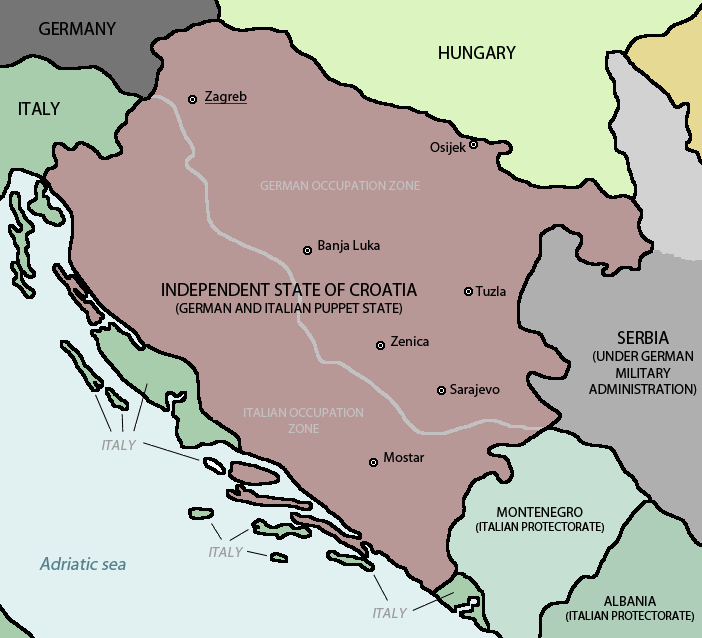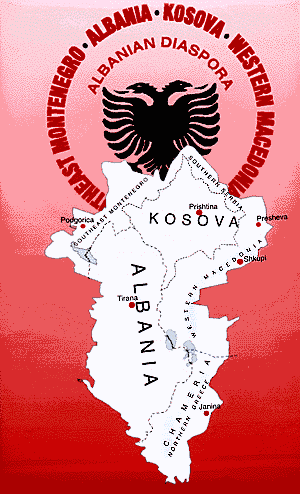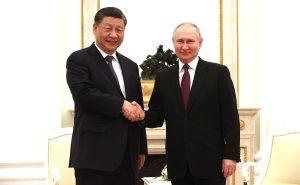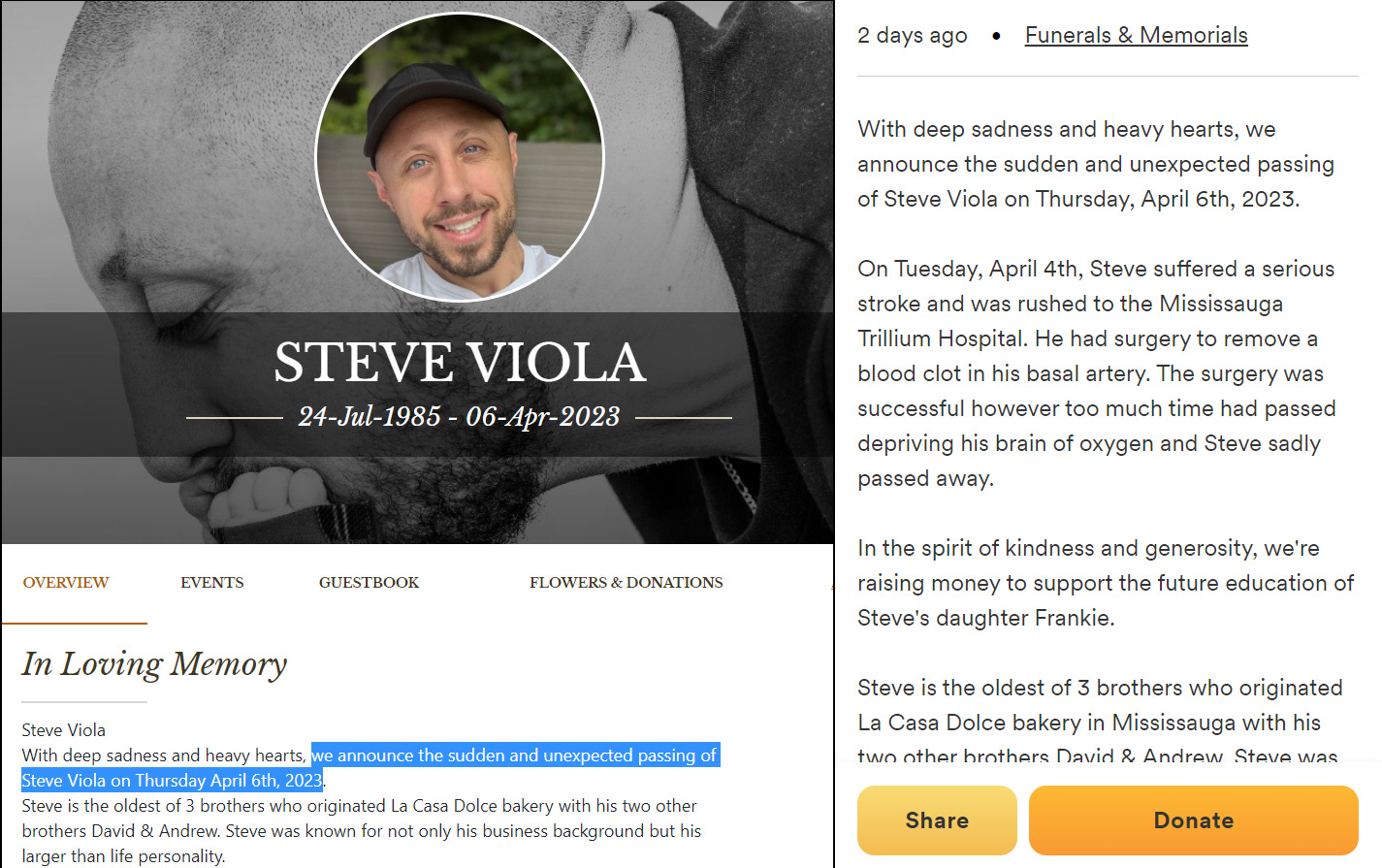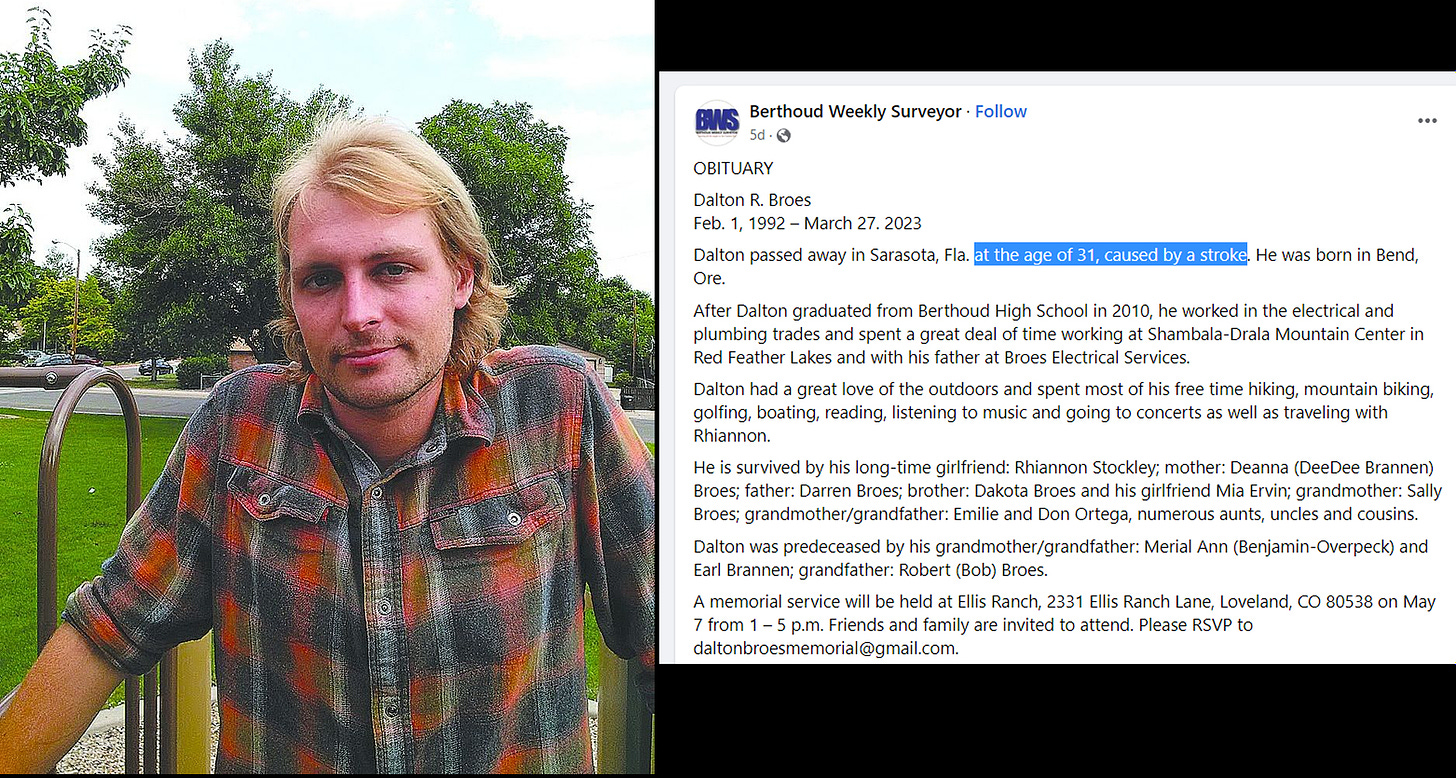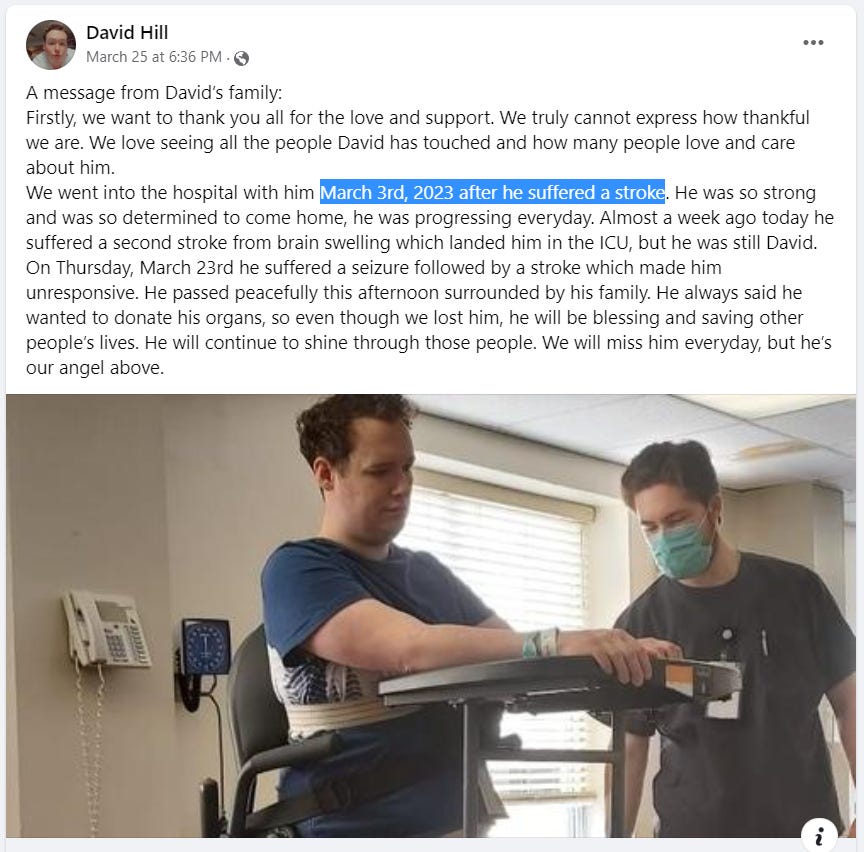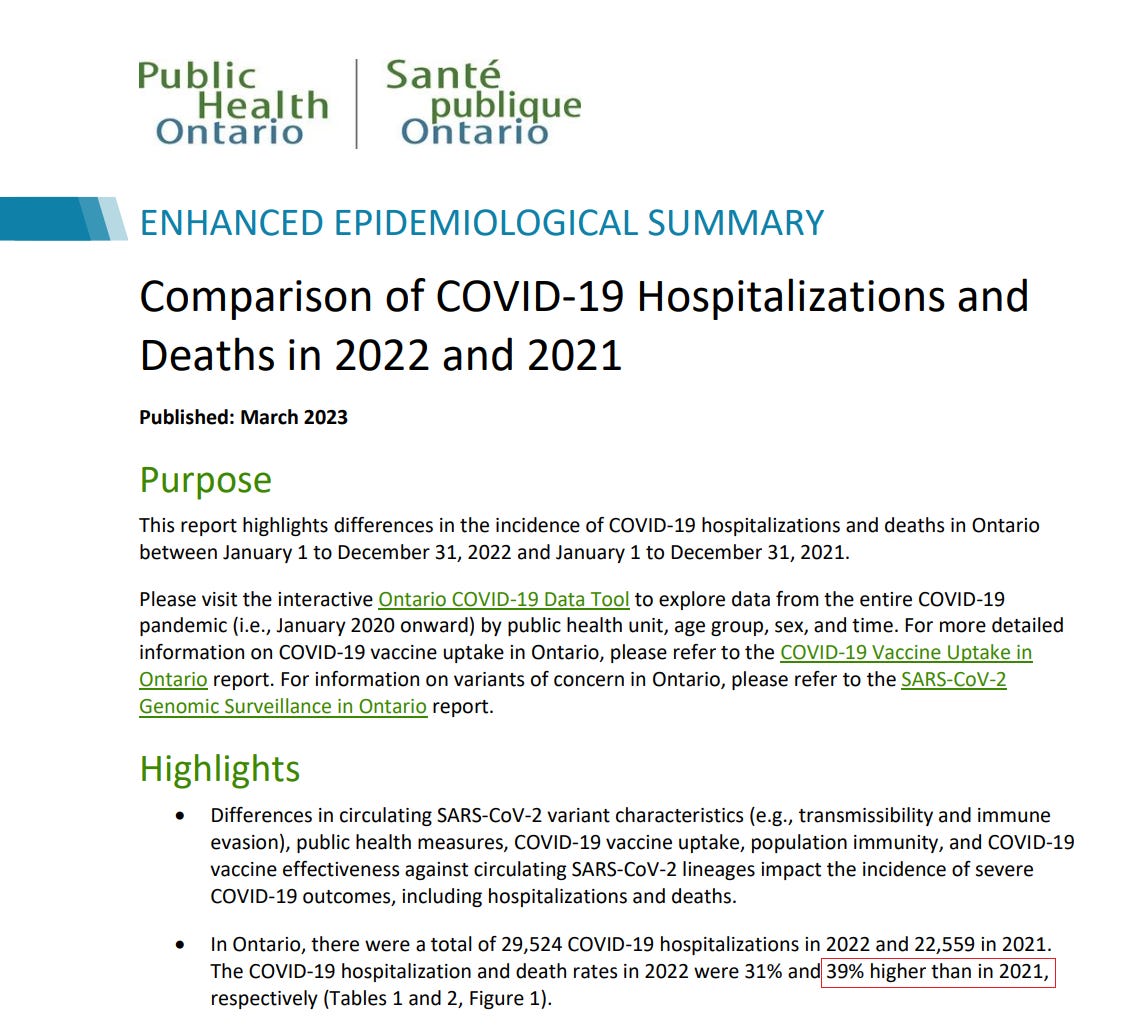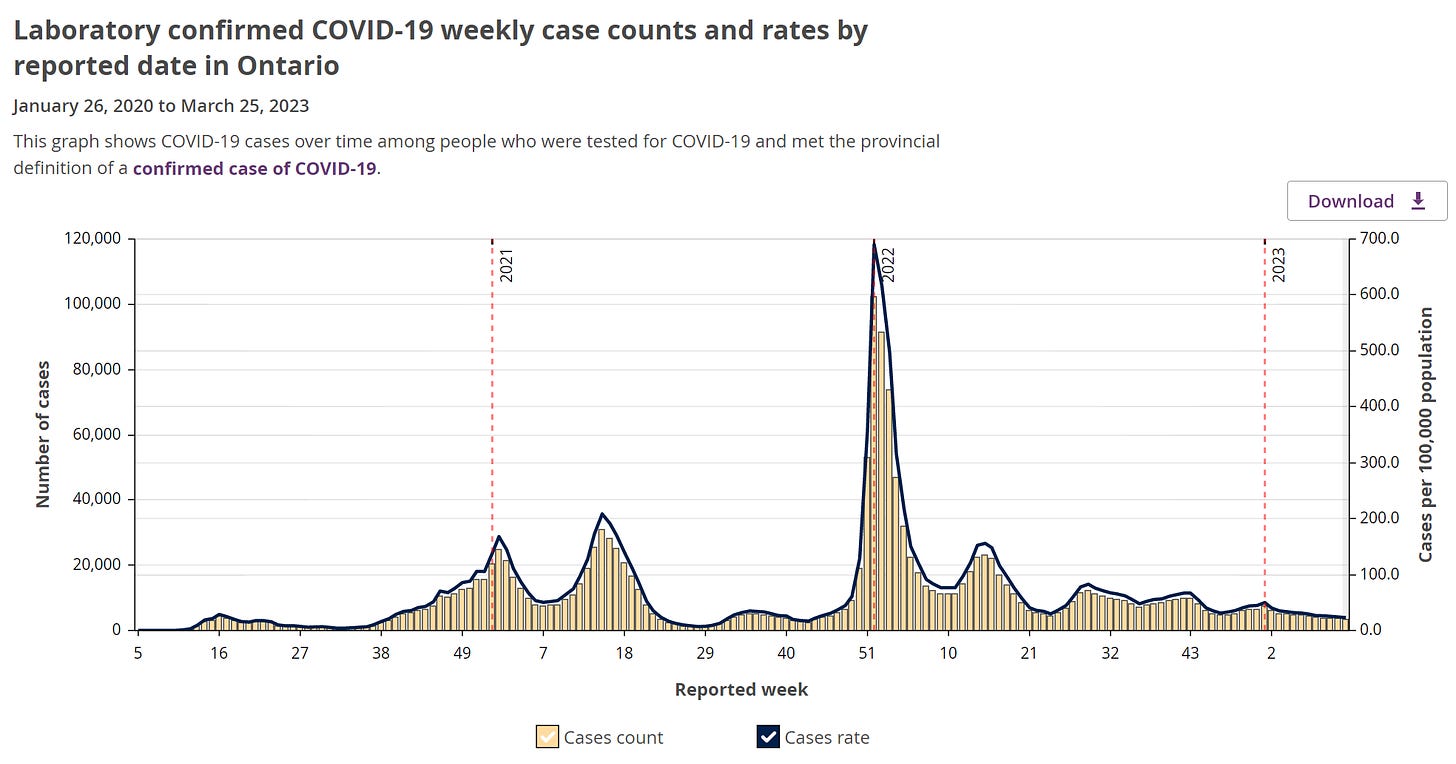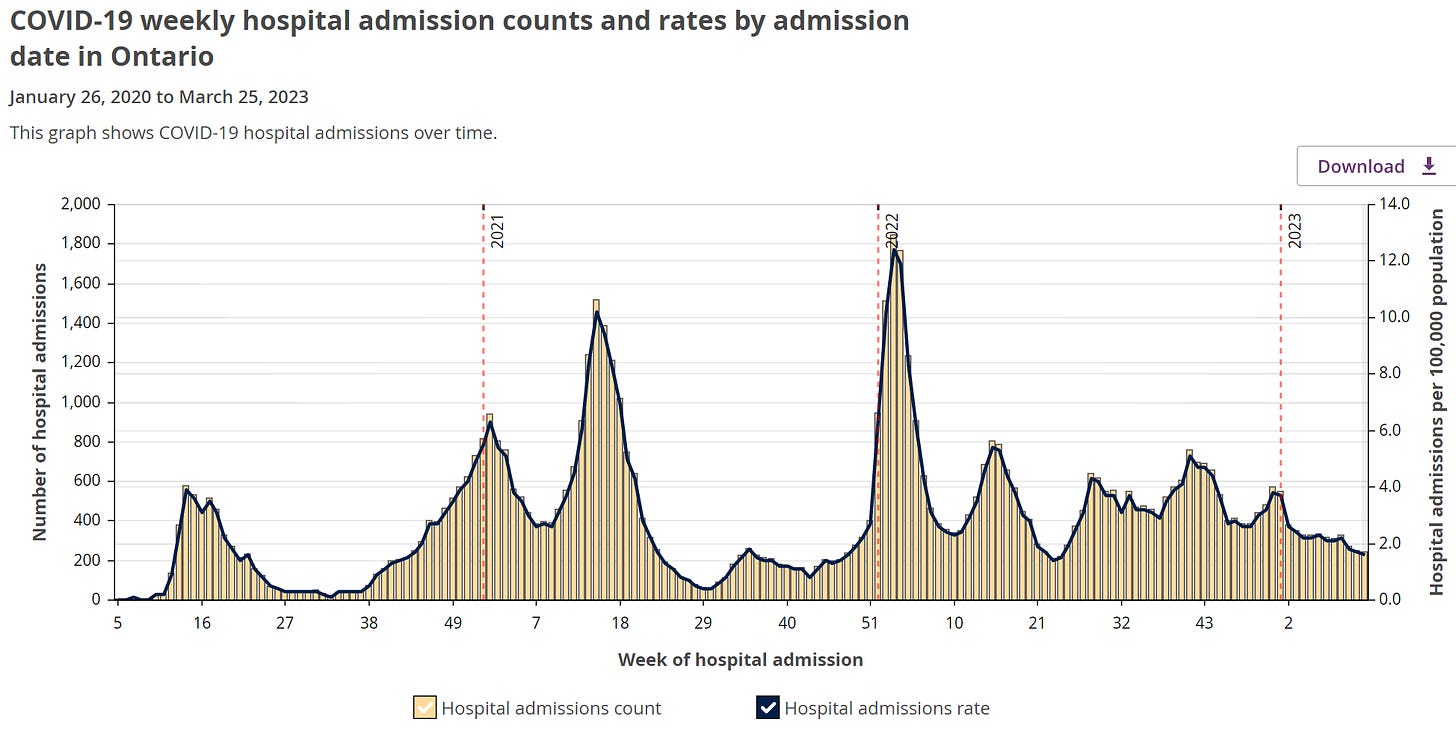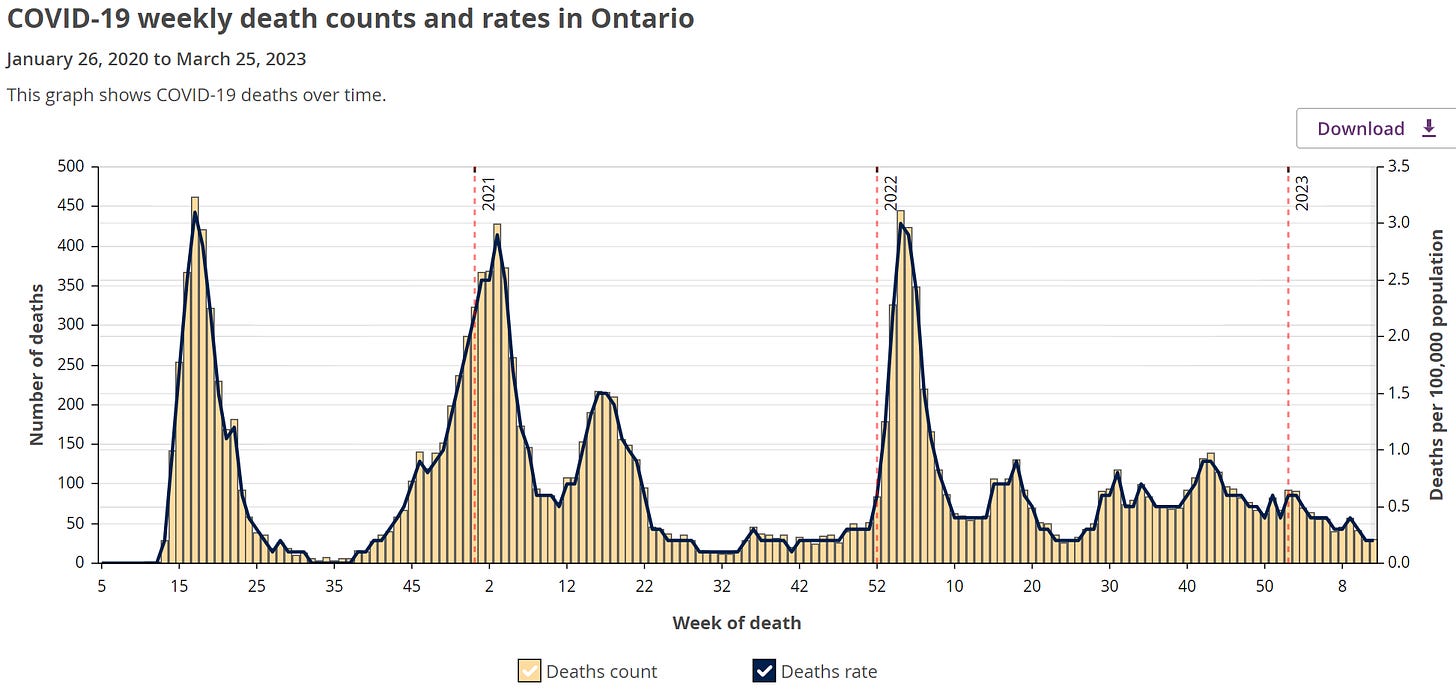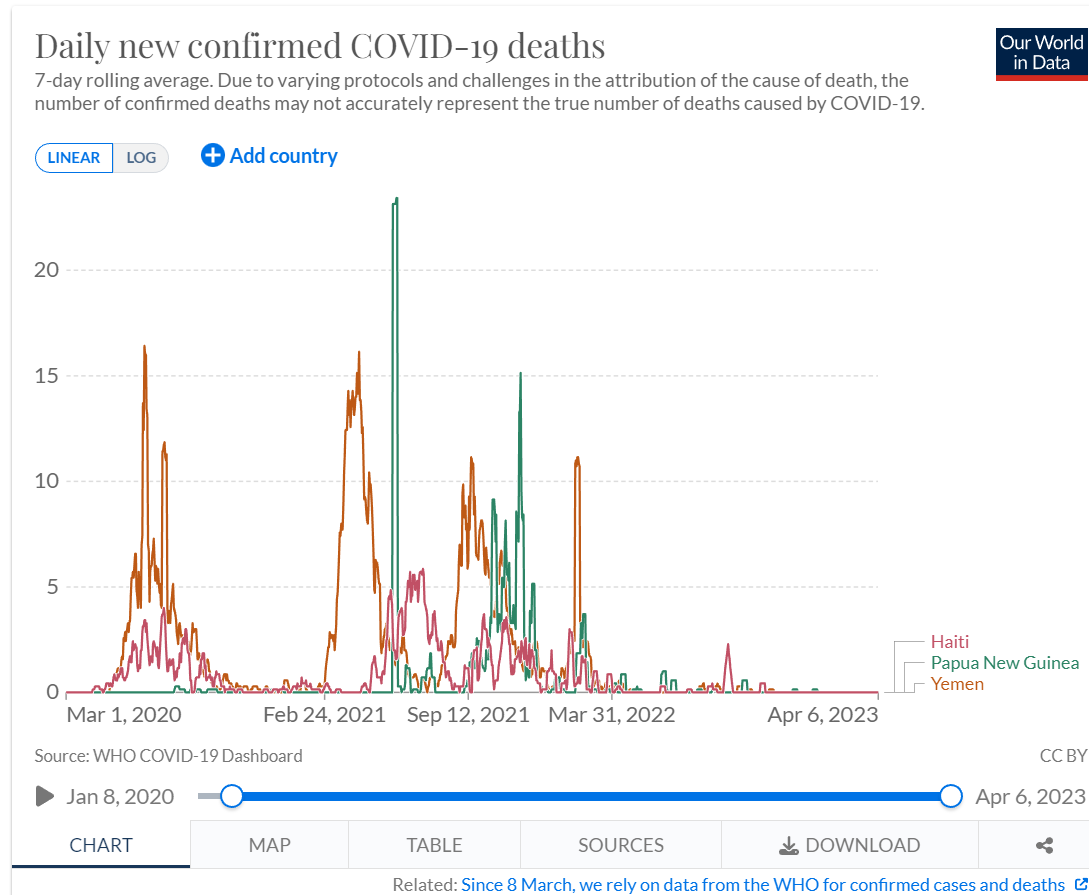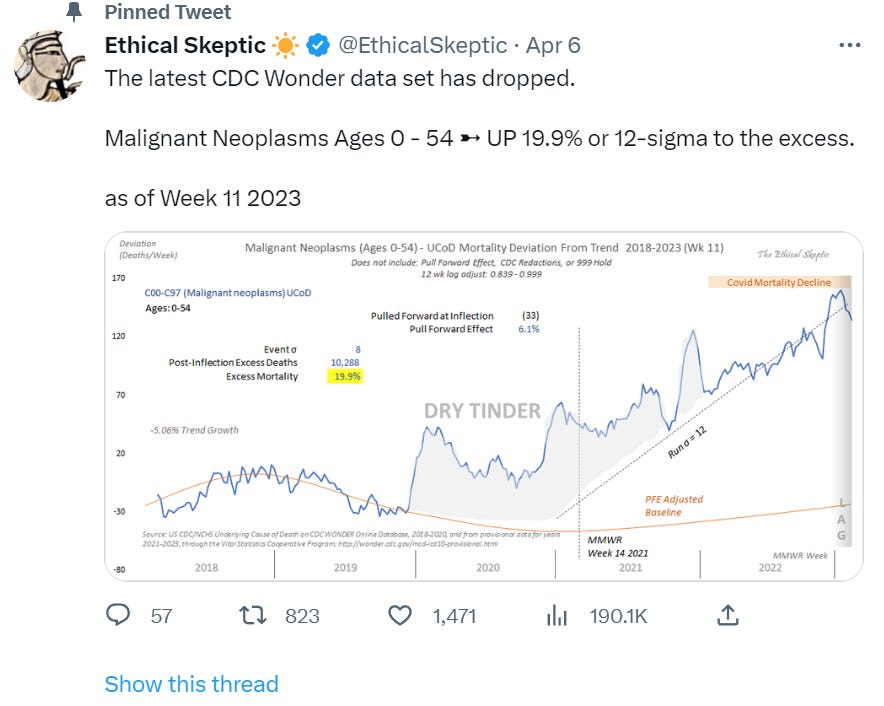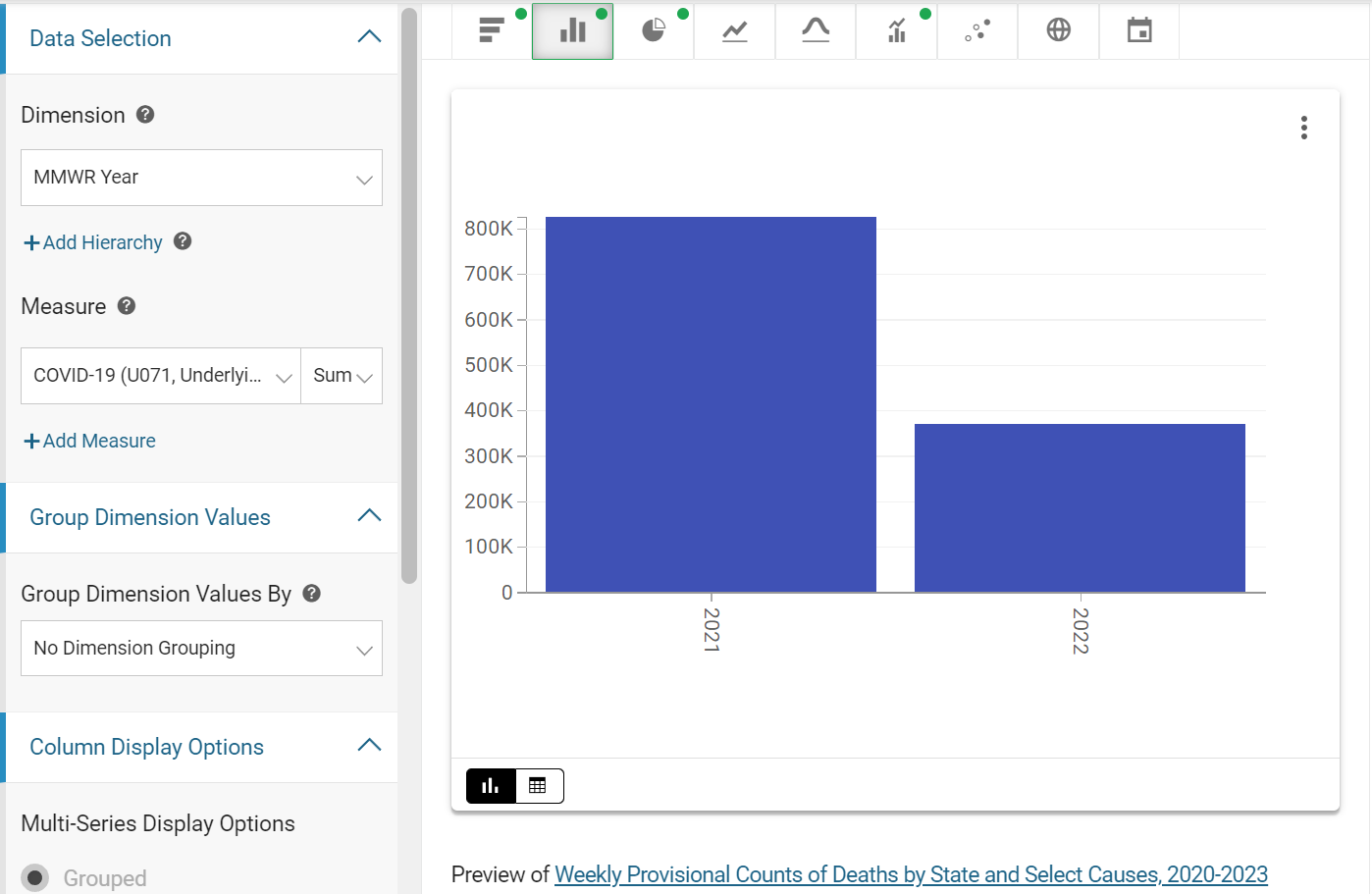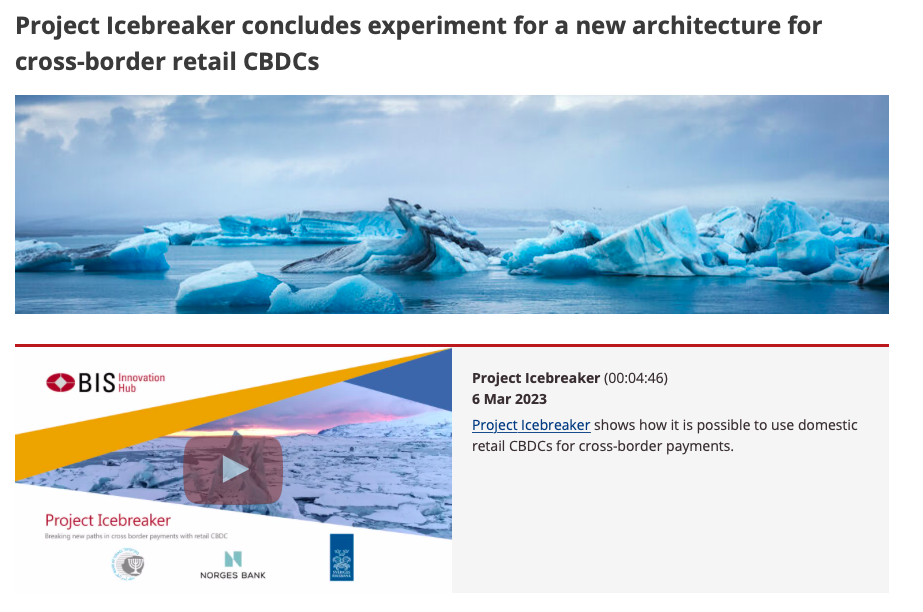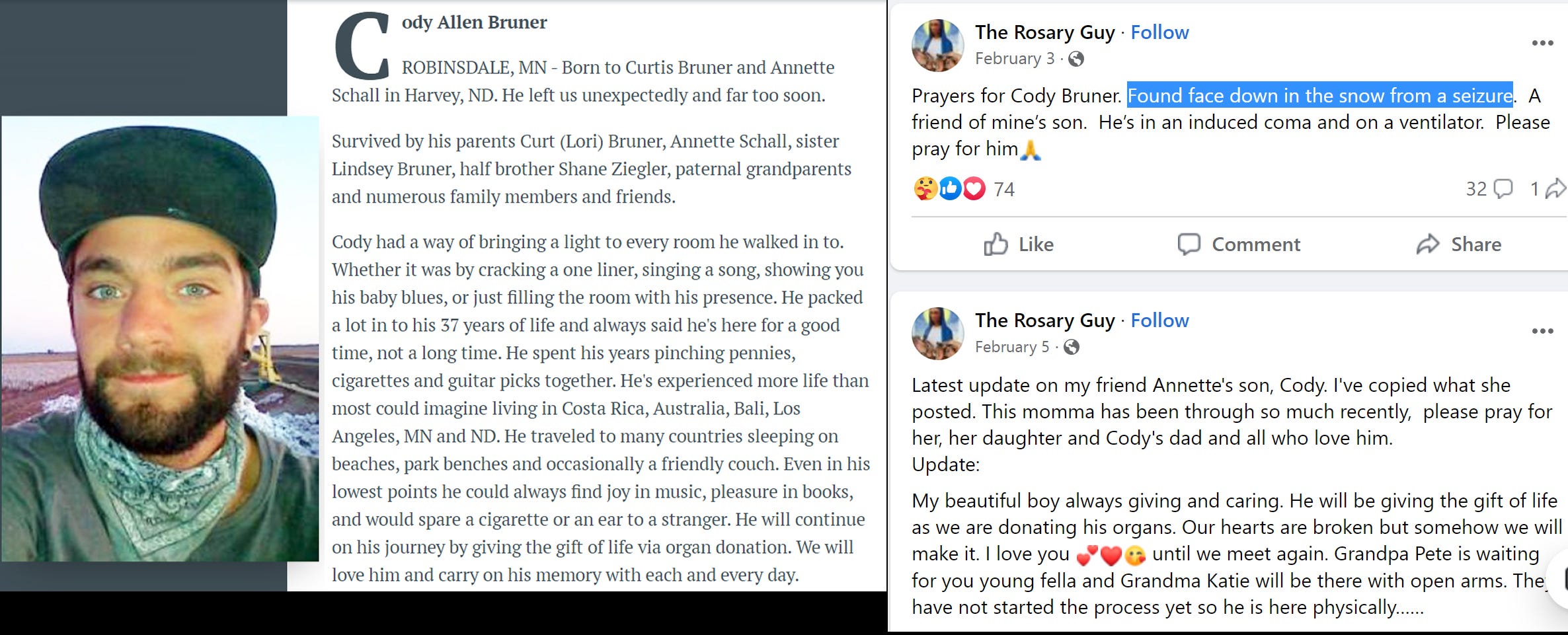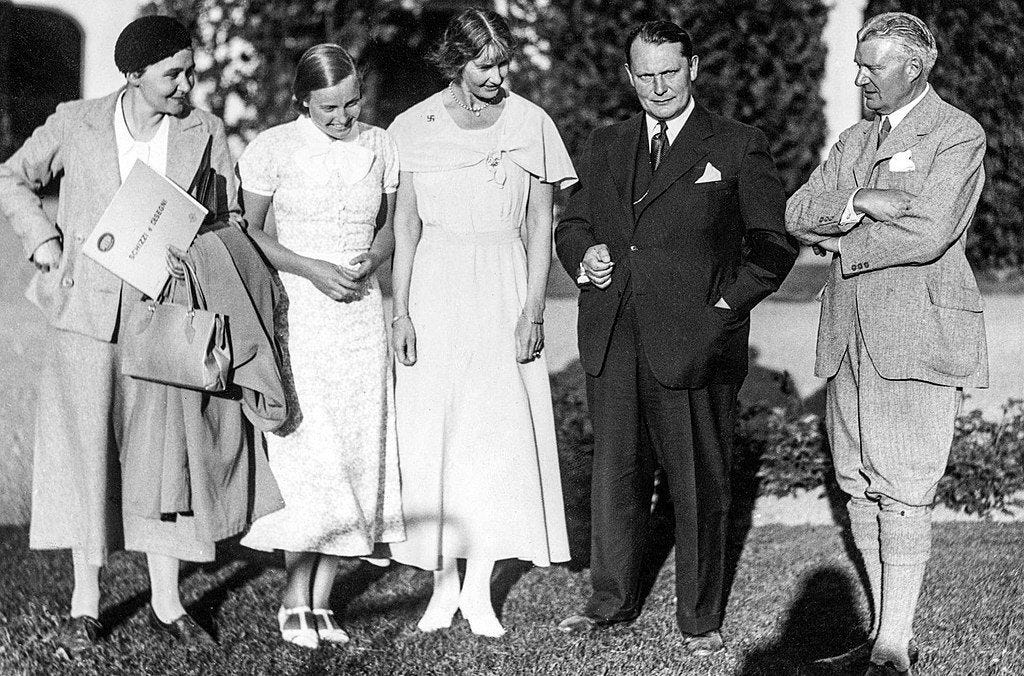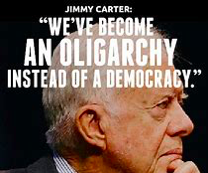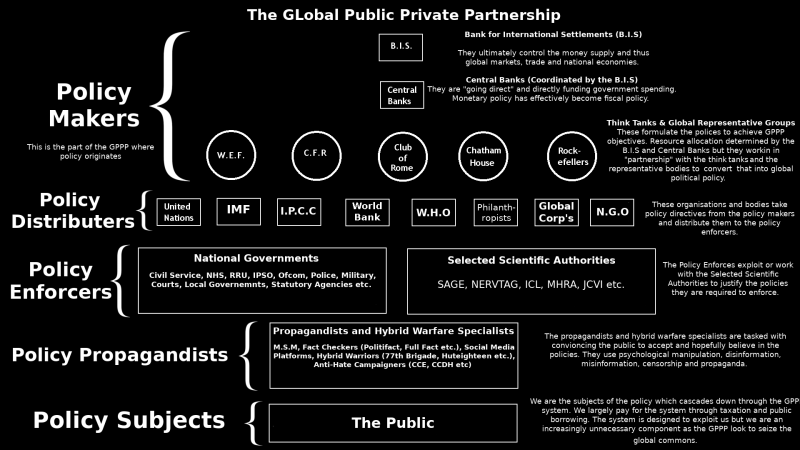All Global Research articles can be read in 51 languages by activating the Translate Website button below the author’s name.
To receive Global Research’s Daily Newsletter (selected articles), click here.
Click the share button above to email/forward this article to your friends and colleagues. Follow us on Instagram and Twitter and subscribe to our Telegram Channel. Feel free to repost and share widely Global Research articles.
***
Fishing is older than humanity. Paleontologists have found evidence that our ancestors Homo habilis and Homo erectus caught lake and river fish in east Africa a million years ago. Large shell deposits show that our Neanderthal cousins in what is now Portugal were harvesting shellfish over a hundred thousand years ago, as were Homo sapiens in South Africa. Island dwellers have been fishing in the southwestern Pacific for at least thirty-five millennia.1
For most of our species’ existence, fish were caught to be eaten by the fishers themselves. “They may have traded dried or smoked fish to neighbors, but this trade was not commerce in any modern sense. People donated food to those who needed it, in the certain knowledge that the donors would someday need the same charity.”2
Fishing for sale rather than consumption developed along with the emergence of class-divided urban societies about five thousand years ago. Getting fish to towns and cities where people could not catch it themselves required organized systems for catching, cleaning, preserving, transporting, and marketing. This was particularly true in the Roman Empire, where serving fresh fish at meals was a status symbol for the rich, and fish preserved by salting was an essential source of protein for soldiers and the urban poor. In addition to boats, an extensive shore-based infrastructure was needed to provide fish for millions of citizens and enslaved people: “elaborate concrete vats and other remains of ancient fish-processing plants have been found all along the coasts of Sicily, North Africa, Spain, and even Brittany on the North Atlantic.”3
The first surviving account of fish depletion caused by overfishing was written in Rome, about 100 CE. The poet Juvenal described a feast at which the fish served to the wealthy host had been imported from Corsica or Sicily, because
…our waters are already
Quite fished-out, totally exhausted by raging gluttony;
The market-makers so continually raking the shallows
With their nets, that the fry are never allowed to mature.
So the provinces stock our kitchens.
Fish populations in rivers and coastal areas were also depleted by urban pollution. At the same meal, Juvenal says that a less-favored guest was served “a fish from the Tiber, covered with grey-green blotches…fed from the flowing sewer.”4
When the Roman Empire collapsed in Europe after 500 CE, commercial fishing contracted sharply: it was no longer safe or profitable to transport food large distances for sale. Fish was still on the menu everywhere, but for several centuries, “inland and coastal (shoreline) fisheries were common but local everywhere in medieval Europe.”5
“The First Mass-Produced Food Commodity”
Beginning in the eleventh century, increased political stability and renewed economic growth made possible what some historians call the “fish event horizon”—a rapid expansion of commercial fishing in the North and Baltic seas. Fishers in Norway and Iceland had two great advantages: proximity to waters that were home to more fish than all European rivers combined, and climates that were ideal for air drying cod. Hanging gutted fish on open-air racks for several months removed most of the water, leaving all the nutrients of fresh fish in hard sticks that could be eaten directly or soaked and cooked. The dried fish could be stored for years without spoiling.
Stockfish, as wind-dried cod and ling were called in medieval times, was the first mass-produced food commodity: a stable, light, and eminently transportable source of protein. From about 1100, Norway exported commercial quantities of stockfish to the European continent. By 1350, stockfish had become Iceland’s staple export commodity. English merchants, among others, brought grain, salt, and wine to trade for stockfish, but Icelandic fishermen could not keep up with European demand. Thus, after 1400, the English developed their own migratory fishery at Iceland, carried on at seasonal fishing stations.6
When Europe-wide trade reemerged, merchants found that air-dried cod from Norway and (later) salted herring from Holland commanded premium prices. Archeological evidence from across western Europe shows “a dramatic shift from local freshwater fish to air-dried cod from Norway from the eleventh century onwards.”7 For centuries to come, preserved fish from northern waters “fed the European need for a relatively cheap, long-lasting and transportable fish food.”8
The market for ocean fish in the late Middle Ages was driven, at least in part, by declining stocks of freshwater fish, caused by expanded agriculture and the growth of towns and cities. Deforestation, erosion caused by intensive plowing, and a doubling or tripling of the urban population combined to dump masses of silt and pollutants into rivers across Europe, while thousands of new watermills, built to grind grain and cut lumber, blocked rivers and streams where migratory species spawned.9 As a result, “even in wealthy Parisian households and prosperous Flemish monasteries, consumption of once-favored sturgeon, salmon, trout, and whitefish shrank to nothing by around 1500.”10
In The Ecological Rift, John Bellamy Foster, Brett Clark, and Richard York show how capital’s irresistible drive to expand “sets off a series of rifts and shifts, whereby metabolic rifts are continually created and addressed—typically only after reaching crisis proportions—by shifting the type of rift generated…[and subsequently] new crises spring up where old ones are supposedly cut down.”11 This happened with fish in the late Middle Ages, when capitalist industries first developed, in Henry Heller’s apt phrase, “within the pores of feudalism.”12 When intensive fishing and pollution undermined the natural processes and environments that had maintained freshwater fish populations for millennia, the fishing industry shifted geographically, moving in order to exploit different kinds of fish in different locations.
The shift from freshwater to ocean fish required much greater fishing effort and investment. Catching enough cod and herring for continental markets required ocean fishers to travel further and stay at sea longer, and processing the fish onshore required more time, equipment, and labor. By the 1200s, merchants from northern Germany were financing expanded fishing operations in Denmark and Norway, providing advance payments, salt, and other necessities.13 Over time, outside capital investment funded ever-larger fishing operations.
[In the 1200s] more than five hundred English, Flemish, and French vessels gathered off Great Yarmouth to supply unnumbered English and Flemish needs, while Paris had more than thirty million salt herring annually barged up the Seine and another twelve million plus were shipped to Gascony. At the same time along the southwestern coast of Danish Scania each year for a century and more, five to seven thousand small boats caught more than a hundred million fish and the merchants from northern Germany who ran the industry shipped 10,000 to 25,000 tonnes of product.14
Capitalist Fishing in the Low Countries
In the late 1500s, popular rebellions in the Low Countries triggered the world’s first bourgeois revolution, founding what Karl Marx called a “model capitalist nation.”15 In Capital, he identified fishing as key factor in Holland’s economic development.16
The area that now comprises the Netherlands and Belgium had been part of the Spain-based Hapsburg empire, a regime that rivaled Russia’s tsars in reactionary hostility to any form of economic or political change.17 The Dutch Revolt, as Marxist historian Pepijn Brandon writes, overthrew Hapsburg rule in the northern provinces, “left the state firmly under the control of the merchant-industrialists…[and] liberated one of Europe’s most developed regions from the constraints of an empire in which trade and industry were always subordinated to royal interest.” The new republic “became Europe’s dominant centre of capital accumulation.”18
An important factor in the rise of the Dutch merchant-industrialist class, scarcely mentioned in many accounts, was the absolute dominance of the Dutch fishing industry in the North Sea. For most of the late Middle Ages, Dutch fishers had to work close to shore because their principal catch was herring, a fatty fish that spoils in a few hours unless it is quickly preserved. Catches were limited by the need to return to shore, where the fish could be gutted and preserved by soaking in barrels of brine.
In about 1400, Dutch and Flemish fishers invented gibbing, a technique of rapidly gutting and salting herring. In 1415, another invention took full advantage of that technique—a Haringbuis(herring buss) was a large, broad-bottomed ship designed for high-volume fishing, with sufficient deck space for gibbing a full day’s catch and storage capacity for large volumes of salted fish. A crew of twelve to fourteen could work at sea for months in what was, as environmental historian John Richard writes, “essentially a floating factory.”19
Each year, hundreds of herring busses sailed from Dutch ports to the far north of Scotland and then, using mile-long driftnets, followed the vast shoals of herring that annually migrated south in the North Sea, east of England. Often, the fleet was supported by smaller boats that replenished their supply of food, barrels, and salt, and took full barrels of fish back to port. These floating factories gave Low Country shipowners a huge advantage over their English and French competitors in the North Sea. They could stay at sea longer, travel farther, catch more fish, and deliver a commodity that needed little on-shore processing. For the next three hundred years, the Dutch North Sea fishery was “the single most closely managed and technologically advanced fishery of the world.” In most years, Dutch ships captured twenty thousand to fifty thousand metric tons of fish in the North Sea, more than all other North Sea fishers combined. In one exceptional year, 1602, the Dutch fishers brought in seventy-nine thousand tons of fish.20
As economic historians Jan de Vries and Ad van der Woude point out, the economic impact of what was called the “great fishery” extended beyond the revenues derived directly from selling fish. This sector not only employed many workers but possessed strong forward and backward linkages to shipbuilding, ropeworks, net and sail makers, the timber trade and sawing mills, ships provisioning, salt refining, cooperage and packing, smoking houses, and long-distance trade and shipping. It is not altogether surprising that jealous foreigners saw the fisheries as the secret weapon of Dutch merchants and shipowners.21
Building and equipping herring busses required more capital than the small boats used by traditional coastal fishers. De Vries and van der Woude describe the industry’s evolution from early partnerships to truly capitalist organizations.
In its early stages, the ownership of the herring busses was in the hands of partnerships, the partenrederij prevalent also in ocean shipping, which usually included as partners the skippers of the vessels. Even the fishermen sometimes invested in the partnership, typically by supplying a portion of the nets, which their wives and children, or they themselves during the off-season, had made. However, already in the fifteenth century, many fishermen worked for wages…and over time wage labor so grew in importance that first the fishermen and later even the skipper disappeared as participants in the partnerships, leaving a partenrederij composed primarily of urban investors. In the mid-sixteenth century, when the herring buss fleet of Holland alone already numbered some 400 vessels and other economic activities were yet of a rather modest scope, these partenrederijen must have formed one of Holland’s most important fields of investment.22
The success of Dutch fishing gave an impetus to a substantial shipbuilding industry. As historian Richard Unger has documented, in the 1400s ships were built, one at a time, by independent shipwrights and their apprentices—but by 1600, shipbuilding was concentrated in a few large operations, and “the industry shifted from a medieval handicraft to something along the lines of modern factory organization.” Workers were paid daily wages at rates negotiated with local guilds, and were required to work fixed hours. The industry produced between three hundred and four hundred ships a year, each taking six or more months to complete. Dutch shipbuilders were widely seen as the best in Europe, so a considerable part of the industry’s revenue came from ships that were commissioned by merchants from other countries. The capitalist owners of Dutch shipyards were “among the wealthiest of businessmen in a country of wealthy men.”23 In 1578, Adriaen Coenan, a Dutch businessman who had spent his life in the fishing industry described herring as Holland’s “golden mountain.”24
In 1662, Pieter de la Court, a wealthy businessman and strong supporter of the republic, wrote a widely read and translated book—Interest van Holland (Holland’s True Interest)—to explain the Dutch Republic’s economic success. He particularly stressed the importance of fishing, claiming that it generated “ten times more profit” each year than the Dutch East India Company’s state-enforced monopoly. Fishing was economically important not just on its own, but for the impetus it gave to related industries. “More than the one half of our trading would decay, in case the trade of fish were destroyed.”
He identified fisheries, manufacturing, wholesale trading (traffick), and freight-shipping as “the four main pillars by which the welfare of the commonalty is supported, and on which the prosperity of all others depends.”25 Two centuries later, Marx offered a similar shortlist, identifying “the predominant role of fishing, manufacture and agriculture for Holland’s development.”26
The revolution that began in the North Sea in the 1400s—the conversion of immense quantities of ocean life into commodities for sale across Europe—expanded across the Atlantic in the 1500s.
The Gold Mines of Newfoundland
Accounts of transatlantic trade in the 1500s typically focus on what Perry Anderson calls “the most spectacular single act in the primitive accumulation of European capital during the Renaissance”—the plunder of precious metals by Spanish invaders in South and Central America.27 Year after year, well-guarded convoys carried gold and silver to Europe, simultaneously enriching Spain’s absolute monarchy and destabilizing Europe’s economy. Spain’s treasure fleets certainly played a big role in the long-term development of European capitalism, but they were not alone in creating a disruptive transatlantic economy. While Spanish ships carried silver and gold, a parallel trade involving far more ships and people developed far to the north. Historians of capitalism, including Marxists, have paid too little attention to what Francis Bacon called “the Gold Mines of the Newfoundland Fishery, of which there is none so rich.”28
Little is known about the Venetian navigator who led the first expedition from England to Newfoundland in 1497. His real name was Zuan Cabotto, but he was known as Juan Caboto in Spain and John Cabot in England. In 1496, Henry VII granted him letters patent “to find, discover and investigate whatsoever islands, countries, regions or provinces of heathens and infidels, in whatsoever part of the world placed, which before this time were unknown to all Christians.”29 With financial backing from Italian bankers and merchants from the west England port of Bristol, he sailed west on May 2, 1497, in a small ship with about eighteen crew members.30 Thirty-five days later, he “discovered” new territory on the far side of the Atlantic.
Of course, the large island that became known as Newfoundland had been discovered long before: there is archaeological evidence of human settlement on the island nine thousand years ago, and the Beothuk people had been there for 1,500 years when Cabot claimed it for the English king and the Catholic Church. Cabot was not even the first European—Viking explorers briefly settled in Newfoundland around 1000 CE, and a few Basque and Portuguese fishers may have sailed to the cod-rich waters earlier in the 1400s. Nevertheless, Cabot’s rediscovery of Newfoundland is important to the history of capitalism, because it alerted Europe’s growing merchant class to a major opportunity to profit by expropriating nature’s free gifts.
Like Columbus, Cabot was seeking a direct route to Asia—as historian Peter Pope writes, he “sought Japan, but his greatest discovery was cod.”31 Shortly after the Matthew returned to Bristol in August 1497, the Milanese ambassador in London wrote to the Duke of Milan:
They assert that the Sea there is swarming with fish which can be taken not only with the net but in baskets let down with a stone, so that it sinks in the water. I have heard this Messer Zoane [Cabot] state so much. These same English, his companions, say that they could bring so many fish that this Kingdom would have no further need of Iceland, from which there comes a very great quantity of the fish called stockfish.32
Within a decade of Cabot’s return, fishing “opened up in Newfoundland with the enthusiasm of a gold rush.”33 By 1510, dozens of ships from France, Spain, and Portugal were traveling to the land of cod every spring, and by mid-century there were hundreds. The Newfoundland fishery drove “a 15-fold increase in cod supplies…[and] tripled overall supplies of fish (herring and cod) protein to the European market.”34 By the late sixteenth century, cod, formerly a distant second to herring, comprised 60 percent of all fish eaten in Europe.35
The First Capitalist Factories
In 1776, in the first chapter of The Wealth of Nations, Adam Smith famously attributed the “greatest improvements in the productive powers of labor” to “the effects of the division of labor,” in what he called manufactories. In some pin-making establishments, for example, “about eighteen distinct operations…are all performed by distinct hands.” By dividing up the tasks, pin factories produced many times more pins than would have been possible if each worker made them individually.36
Perhaps less famous is the particular emphasis that Marx placed on the importance of division of labor in manufacture, his term for “combining together different handicrafts under the command of a single capitalist” before the introduction of machinery in the Industrial Revolution.37 “The division of labor in the workshop, as practiced by manufacture, is an entirely specific creation of the capitalist mode of production.”38
A recent book claims that mass production by division of labor was invented in the 1460s on the short-lived Portuguese sugar plantations on the island of Madeira. The assignment of different activities to different groups of enslaved people, the authors say, was “a new system for producing and distributing food,” showing that “the plantation was the original factory.”39While that was an important development, it was not the first case of factory food production. Half a century earlier, Dutch merchants, shipbuilders, and fishworkers had developed a sophisticated division of labor to produce food in much greater volume—and not a luxury product like sugar, but a mass commodity, seafood. The Dutch herring busses of the early 1400s were the first mass-production food factories, and the industry they initiated played a major role in the development and growth of capitalism.
In Newfoundland, two distinct forms of factory fishing developed in the 1500s. Offshore fishers, mainly French, caught and preserved cod on the Grand Banks, a large, relatively shallow area that extends about three hundred kilometers (two hundred miles) south and east of Newfoundland, where cod gather to spawn. Inshore fishers used small open boats to catch cod within a few miles of land, and took them ashore every day for processing. Both offshore and inshore fisheries developed factory-like operations, with structured divisions of labor between workers skilled in the various tasks of catching and preparing fish.
Offshore fisheries caught and preserved fish on ships similar to Dutch herring busses, called bankers or bank ships. In each ship, up to twenty people worked in floating production lines. The cod were caught by fishers, each working several baited lines at once. Historian Laurier Turgeon describes a typical division of labor after the cod were hooked and hauled up:
All eviscerating or dressing operations were carried out on deck where activity had turned well and truly into assembly-line production. The ship’s boys grabbed the fish [from one of the fishers] and threw it onto the splitting-table. The “header” severed the head, gutted it, and in the very same movement, pushed it towards the “splitter” at the opposite end of the table. Two or three deft strokes of the knife sufficed to remove the backbone, after which the “dressed” filet dropped down the hatch into the ship’s hold. There, the salter laid it out between two thick layers of salt.
Work continued apace from dawn to dark, even overnight, when the catch was particularly good. Every bank ship was “a workshop for the preparation and curing of fish” and the workers’ activity “resembled 19th-century factory labor in many respects.”40 When the hold was full of what was called wet or green (actually pickled) cod, the ship returned to Europe. Some made two or three round trips each year. Inshore operations involved more ships and workers, but were more time-limited, since the best inshore fishing occurred from June to August, when millions of capelin (a small, smelt-like fish) spawn in shallow waters, attracting hungry cod.41
Each spring, cargo ships traveled from western Europe to bays and inlets along the Newfoundland coast. Each ship carried up to 150 workers, many barrels of salt, and a dozen or so open fishing boats that had been built in Europe, then disassembled for compact storage. Long beaches known for particularly good fishing attracted multiple ships, so some seasonal fishing camps may have housed thousands of workers at a time. The fish they caught and preserved, known as salt-cod or Poor John, was tastier than Norwegian stockfish, and largely replaced it as the leading mass-produced food commodity in England and southern Europe.
The inland cod fishery also involved an assembly line division of labor, in facilities built each year on Newfoundland’s stony beaches. A journal kept by ship’s surgeon James Yonge in the 1600s, summarized here by Pope, describes the factory-like operation of Newfoundland fishing stations, called fishing rooms by English fishworkers.
If fishing was good, the crews would head for their fishing rooms in late afternoon, each boat with as many as one thousand or twelve hundred fish, weighing altogether several tonnes.… The shore crews began the task of making fish right on the stage head, the combination wharf and processing plant where the fish was unloaded. A boy would lay the fish on a table for the header, who gutted and then decapitated the fish.… The cod livers were set aside and dumped into a train vat, where the oil rendered in the sun. The header pushed the gutted fish across the table to the splitter, who opened the fish and removed the spine.… Untrained boys moved the split fish in handbarrows and piled it up for an initial wet-salting. This salting required experience and judgment, as Yonge stressed: “A salter is a skillful officer, for too much salt burns the fish and makes it break, and wet, too little makes it redshanks, that is, look red when dried, and so is not merchantable.…”
After a few days in salt, the shore crews would rinse the fish in seawater and pile it on a platform of beach stones, called a horse, for a day or two before spreading it out to dry on a cobble beach or on flakes, rough wooden platforms covered with fir boughs or birch bark.… At night and in wet weather, the fish being processed had to be turned skin side up or collected in protected heaps. After four or five days of good weather, it was ready to be stored in carefully layered larger piles containing about fifteen hundred fish.42
The cod were so plentiful that frequently more were caught and dried than one ship could carry, so an intermediate trade developed in which Dutch merchants on sack ships purchased dried fish from Newfoundland beaches during the fishing season and resold it in Europe.
Some accounts of early modern fishing give the impression that Newfoundland cod were caught by brave, independent fishers who crossed the Atlantic in tiny boats. A few may have done that, but not enough to cause the immense leap in commodity fish production that historians have dubbed the North Atlantic Fish Revolution. That was accomplished by thousands of skilled fishworkers who crossed the ocean in large ships that were financed by merchant capitalists. As Pope writes, “This sophisticated division of labor, the large size of the production unit, together with the time discipline imposed by a limited fishing season gave the dry fishery some of the qualities of later manufacturing industries.”43 Transatlantic fishing was big business from the beginning. The sixteenth-century fishing rooms and bank ships were factories, long before the Industrial Revolution.
The World’s First Oil Boom
Inshore cod fishing was concentrated on Newfoundland’s east and south coasts. A different extractive industry, also using factory production, developed near the island’s northwest corner.
In the 1970s, Selma Huxley Barkham radically changed our understanding of the sixteenth-century fishery in Newfoundland and Labrador. With little institutional support—she taught English part-time to pay her bills—the Canadian archivist spent years in northern Spain, digging through libraries and archives in search of references to sixteenth-century Basque voyages to Terranova. Her discoveries rewrote the history of sixteenth-century Newfoundland: she found convincing evidence that in addition to the thousands who came for cod, up to two thousand Basque whalers spent each year in the area now known as the Strait of Belle Isle. Following her leads, archaeologists have found several sunken ships and the remains of over a dozen sixteenth-century whaling stations on the Labrador shore.
Basques from France and Spain dominated commercial whaling in Europe for centuries. Hunting in the Bay of Biscay, they primarily targeted bowhead and right whales, which were large, up to seventeen meters long, but much smaller than the animals that deep-sea whalers later hunted to near-extinction. Rights and bowheads are slower and remain afloat when killed—a major advantage to the rowers who had to tow them ashore.
Basque merchants sold salted whale meat, which could be eaten on holy days because the whales were thought to be fish, and baleen, a flexible cartilage that was used to make corsets, buggy whips, umbrellas, and so on. The big moneymaker, however, was whale oil, produced by slowly heating blubber in large cauldrons. Barrels of Basque-produced whale oil were used as far away as England and Germany for textile manufacturing, lighting, soap-making, and caulking ships.44
At some point, probably in the 1530s, Basque fishers discovered that in the summer and autumn bowhead whales migrated in large numbers through the narrow Strait of Belle Isle, where they could be caught relatively easily.45 Intensive whale hunts soon began, with hundreds of teams of Basque whalers traveling annually to the strait in “ships as large as anything afloat.… Some of them were capable of carrying up to two thousand barrels of whale oil, which weighed three hundred pounds each.”46 For four to six months each year the whalers lived and worked in whaling stations that were similar to the temporary cod fishing villages, with a major exception: instead of drying racks, they built tryworks—large stone ovens sheltered by tile roofs, where blubber was boiled down.
Whaling was dangerous work for the crews and, of course, brutal for the whales. When whales were sighted from shore, several teams set out in chalupas—eight-meter-long open boats—each crewed by a harpooner, a steerer, and four or five rowers. Archaeologist James Tuck describes the usual method of attack:
Whales were approached by rowing the boats to within as close as a meter, at which point the whale was harpooned with a barbed iron harpoon…[on a rope that was attached] to a “drogue” or drag which the whale towed through the water until it tired.… Often several harpoons were thrust into the same whale and even then the chase might have taken hours and covered miles before the whale could be approached safely and killed by repeated thrusts of a razor-sharp lance.… Once the whale was killed it was towed by several boats—often against tide and wind—to one of the shore stations for processing.”47
On shore, flensers (whale butchers) removed the whale’s blubber in long spiral strips and cut it into thin pieces. Tryers heated the blubber slowly in copper cauldrons, controlling the temperature to avoid burning, and periodically skimming off oil and moving it to cooling pots, a process that required days of constant attention and work. The cooled oil was stored in two-hundred-liter barrels that coopers assembled onsite.
Barkham’s research showed that whaling operations in the Strait of Belle Isle were “a resounding financial success from their inception.” She estimated that the Basque whalers produced upwards of fifteen thousand barrels of whale oil each year, and sold most of it on the way home, in Bristol, London, and Antwerp.48
But as so often happens when natural resources become mass commodities, the exploitation of whales in Newfoundland soon undermined the very basis of the industry. It is impossible to get exact numbers, but an authoritative study estimates that “as many as a third of the western Atlantic bowhead’s pre-hunt numbers were killed during the course of the 16th century.”49 Bowhead whales reproduce slowly—females take fifteen years to reach sexual maturity, and typically have only one calf every three or four years—so the removal of a third of the population in a few decades had devastating effects.50 By the early 1580s, overhunting had so reduced the bowhead population that some ships returned to Europe half-empty.
Over the next two decades, whalers shifted their hunts west to the Gulf of St. Lawrence and north to the Arctic. Intensive whaling in Newfoundland’s coastal waters ceased for nearly three hundred years.
England versus Spain
Declining catches undoubtedly motivated Spanish Basques to hunt elsewhere, but the geographic shift was made more urgent by conflicts on the far side of the Atlantic.
In 1575, a moderately successful Bristol merchant named Anthony Parkhurst purchased a mid-sized ship and began organizing annual cod fishing expeditions to Newfoundland. Unlike most of his peers, he travelled with the fishworkers; while they were catching and drying cod, he explored “the harbors, creekes and havens and also the land, much more than ever any Englishman hath done.” In 1578, he estimated that about 350 European ships were active in the Newfoundland cod fishery—150 French, 100 Spanish, 50 Portuguese, and 30 to 50 English—as well as 20 to 30 Basque whalers.51
In fact, there were many more ships in the Newfoundland fisheries than that. Sailing close to shore, Parkhurst apparently did not see the several hundred French ships that worked on the Grand Banks every year. Nevertheless, as Turgeon writes, his figures allow a comparison to the more famous treasure fleets that sailed from the Caribbean to Spain in the same period.
Even if one accepts Parkhurst’s simplistic figures, the Newfoundland fleet—comprising between 350 and 380 vessels crewed by 8,000-10,000 men—could have more than matched Spain’s transatlantic commerce with the Americas, which relied on 100 ships at most and 4,000-5,000 men in the 1570s—its best years in the sixteenth century.…
However approximate, these figures demonstrate that the Gulf of St. Lawrence was a pole of attraction for Europeans on a par with the Gulf of Mexico and the Caribbean. Far from being a fringe area worked by only a few fishermen, the northern part of the Americas was one of the great seafaring routes and one of the most profitable European business destinations in the New World.52
Despite the profits others made, Parkhurst observed that “the English are not there in such numbers as other countries.” A decade earlier, he would have found far fewer. And yet, by 1600, the number of English ships that traveled annually to the Newfoundland fishery had more than tripled, while Spanish ships had all but disappeared. To understand how and why that happened, we must take a brief detour into European geopolitics.
Cabot had claimed the new land for England in 1497, but the government did not follow up, and few English merchants and fishers were interested. England’s internal market for fish was well served by cod from Iceland and herring from the North Sea, and the wealthy London merchants who dominated England’s foreign trade were conservative and resistant to change. As John Smith later wrote of English merchants’ reluctance to invest in American colonies where fishing was the major industry, they chose not to risk their wealth on “a mean and a base commoditie” and the “contemptible trade in fish.”53
The few English expeditions to Newfoundland before 1570 were organized by shipowners and merchants who were not part of the London merchant elite: they sailed not from London or even Bristol, but from smaller ports in the West Country, the southwestern “toe” of England. As a result, English ships in Newfoundland were substantially outnumbered by ships from continental Europe for most of the 1500s. This reflected the imbalance of power in Europe, where England was a minor country on the periphery, while Spain controlled an immense empire. After Spain annexed Portugal in 1581, the total capacity of its merchant ships was close to three hundred thousand tons, compared to forty-two thousand for England. Spain claimed, and could enforce, exclusive access to “all the areas outside Europe which seemed at the time to offer any possibility of outside trading.”54
But England’s economy was expanding, and a growing number of English entrepreneurs and adventurers sought to break Spain’s economic power, especially its domination of transatlantic trade. Between 1570 and 1577, for example, at least thirteen English expeditions challenged Spain’s monopoly by trading enslaved people and other commodities in the Caribbean.55Throughout Elizabeth I’s reign (1558–1603), the organizers and supporters of such ventures lobbied hard for what Marxist historian A. L. Morton called “a constant if unformulated principle of English foreign policy—that the most dangerous commercial rival should also be the main political enemy.”56
Economic rivalry was reinforced by religious conflict. England was officially Protestant, while Spain was not only Catholic, but home to the feared and hated Inquisition. When a Protestant-led rebellion against Spanish rule in the Netherlands broke out in 1566, Dutch refugees were welcomed in England, English supporters raised money to buy arms for the rebels, and wealthy English Calvinists organized companies of English soldiers to join the fight. Spanish officials, in return, actively supported efforts to overthrow Elizabeth I and install a Catholic monarch. In 1570, Pope Pius V added to the conflict by excommunicating “the pretended Queen of England.” He ordered English Catholics not to obey Elizabeth, and declared that killing her would not be a sin. As the Marxist historian Christopher Hill wrote of conflicts in England in the next century, “whether we should describe the issues as religious or political or economic is an unanswerable question.”57
When Elizabeth came to the throne, Spain was the richest and most powerful country in Europe, and England was too weak to challenge it directly. Instead, Elizabeth surreptitiously supported a maritime guerrilla war against Spain’s merchant ships and colonies, a freelance war for profit conducted by government-licensed raiders who paid their own expenses and kept most of what they stole. Such legal pirates were later dubbed privateers—I will use that term to distinguish them from traditional pirates, although in practice, it was difficult to tell them apart.
Piracy had been endemic in England for centuries, especially on the southern coast; the pirates “were skilled sailors, organized in groups, and often protected by such influential landowning families as the Killigrews of Cornwall.… The risks of piracy were fairly low, the profits large.”58Many of the mariners who signed on as privateers in Elizabeth’s time had been pirates before, and would return to piracy when their privateering licenses expired. The successful ones were fêted at court, and the most successful received knighthoods. If they were captured by Spanish officials, they faced execution as common pirates, but in England privateering was a respectable profession, dominated by “west country families connected with the sea, for whom Protestantism, patriotism and plunder became virtually synonymous.”59
Promoters, usually shipowners, financed privateering ventures by selling shares to investors, who ranged from rich merchants and government officials to local tradespeople and shopkeepers. Of the loot, 10 or 15 percent went to the crown, and the remainder was split between investors, the promoter, and the captain and crew.
While people from all classes took part, most privateering voyages in Elizabeth’s time were organized and led by those outside of London’s merchant elite. Most came from the West Country, home territory not only for pirates, but for most of the English fishing expeditions to Newfoundland. A common theme in contemporary discussions of fishing was its importance as a training ground for the navy; the same was true of fishing and piracy. Historian Kenneth Andrews has shown that English merchant ships often engaged in both trading and raiding on the same voyages, so it would be surprising if some of the seafarers who carried fishers to Newfoundland did not also attack merchant ships, if only in the off-season.60
The most successful Elizabethan privateer was slave trader Sir Francis Drake. He is best-remembered for circumnavigating the globe, which he did not for the thrill of discovery, but to evade capture after he looted Spanish treasure ships on the coast of Peru. The booty he brought back earned his backers, including the Queen, an astonishing 4,600 percent profit on their investment.
If Spain’s plunder of gold and silver in Central and South America can be called original expropriation, then the English campaign of licensed piracy during Elizabeth’s reign was original expropriation once-removed—some great capitalist fortunes originated as pirate booty, stolen from the thieves who stole it from the Aztecs and Incas.61
Open war between England and Spain broke out in 1585, when Elizabeth publicly declared her support for the Dutch rebels and sent soldiers to aid them. When Spain’s King Philip II responded by prohibiting trade with England and seizing English merchant ships in Spanish ports, Elizabeth encouraged privateers to increase their attacks on Spanish shipping, and Philip began planning a direct attack on England.
On May 30, 1588, a fleet of 130 ships carrying 19,000 soldiers set out from Lisbon to invade England and overthrow Elizabeth. Two months later, the Great Armada was in disarray, battered by fierce storms and defeated by a smaller English force. Only 67 Spanish ships and fewer than 10,000 people survived. English propagandists attributed the victory to the grace of God and Drake’s command, but it was mostly a result of incompetent Spanish leadership—if ever a naval venture deserved to be called a total screw-up from beginning to end, it was Spain’s 1588 Armada.62 Although patriotic textbooks often describe England’s victory as a turning point in the war, Spain’s navy actually recovered quickly and inflicted an equally devastating defeat on Drake’s fleet in 1589. The war continued until 1604, when two new kings, James I of England and Phillip III of Spain, finally signed a peace treaty.
Some historians of the Anglo-Spanish War view it as an unreasonably protracted waste of effort, since neither side gained territory and the final treaty essentially restored the status quo. That is true if the war is viewed as a military fight to protect or expand territory, which it was for Spain’s feudal rulers. But for the merchants who were the primary promoters, financiers, and often warriors on the English side, it was an economic war—if they had read Carl von Clausewitz, they might have said that their war was business conducted by other means. They aimed to profit by capturing the enemy’s merchant ships, and by doing that on a large scale for eighteen years, they broke Spain’s monopoly on Atlantic commerce.
Seemingly an inconclusive, even at times half-hearted struggle, this war in fact marked a turning-point in the fortunes of both nations and above all in their oceanic fortunes.…
Commerce-raiding, it is true, could not win the war.… Yet the cumulative impact of continual shipping losses upon the Iberian marine was heavy. English sources suggest that the English captured well over a thousand Spanish and Portuguese prizes during the war, losses which must have contributed as much as any other factor to the catastrophic decline of Iberian shipping noted in 1608 by a Spanish shipbuilding expert. The system of the transatlantic flotas [treasure fleets] was of course maintained.… But the rest of Iberian trade was perforce abandoned very largely to foreign shipping.63
An important part of England’s economic war, disregarded by many historians, was a war for cod.
Cod War
For a decade before open warfare began, English officials had been discussing expulsion of Spain from the Newfoundland fishery as a possible strategic objective. The argument was strongly made in November 1577 by one of the Queen’s advisors, Sir Humphrey Gilbert, in A Discourse How Hir Majestie May Annoy the King of Spayne.64 ( “Annoy” had a stronger meaning then.)
The second son of a wealthy West Country landowner, Gilbert was a strong advocate of expansionist, pro-Protestant, and anti-Spanish policies. His leadership of the brutal suppression of the Desmond Rebellion in Ireland in 1569 won him a knighthood from the Queen and the fully deserved label “Elizabethan terrorist” from a twentieth-century historian of colonial conquest.65 In 1572, he led a force of 1,500 English volunteers against the Spanish army in the Netherlands.
His 1577 “Discourse” (today it would be called a memorandum or position paper) proposed a pre-emptive attack on Spanish and Portuguese—and possibly French—ships in Newfoundland, “eyther by open hostilytie, or by some colorable meanes; as by geving of lycence under lettres patentes to discover and inhabyte some strange place, with speciall proviso for their safetyes.” The latter course would allow the Queen to disavow attacks on foreign ships if necessary, and “pretend yt was done without your pryvitie [without your approval].”
Gilbert offered to personally finance, organize, and lead a fleet to Newfoundland in order to attack Spanish and Portuguese ships, seize their cargoes, and commandeer the best ships while burning others. This could be accomplished by a relatively small force, because the fishers worked from shore, leaving few, if any, people on the big ships, “so that there is as little doubt of the easye taking, and carrying of them away.” What is more, the expedition would pay for itself, because Newfoundland fish “is a principal and rich and everie where vendible merchaundise.”
Such an attack would not only deprive Spanish merchants of ships and the “great revenues” they obtained from fishing, it would prevent Newfoundland cod from reaching Spain, causing “great famine.” Beyond that, Humphrey suggested that a permanent settlement in Newfoundland could be a base for attacking Spanish ports and shipping in the Caribbean.
There is no record of Elizabeth’s reaction to this plan, but six months later she issued Letters Patent to “our trustie and welbeloved servaunt Sir Humphrey Gilbert,” incorporating something very like the “colorable meanes” he had suggested. In exchange for 20 percent of any gold or silver he might find, the Queen gave Gilbert a six-year license “to discover, finde, search out, and view such remote, heathen and barbarous lands, countreys and territories not actually possessed of any Christian prince or people.” He would personally own all land within two hundred leagues of any permanent settlements he established by 1583—an immense area—and could “take and surprise by all maner of meanes whatsoever…as of goode and lawful prize” any ship that entered that area without his permission.66
The Letters Patent included a pro forma instruction not to attack ships from friendly nations, but in practice, Gilbert now had a license to establish Newfoundland as England’s first overseas colony, expel foreign fishers, and use the island for privateering attacks.
He certainly tried, but as the Queen wrote, he was “a man noted of not good happ [luck] by sea.”67 His first voyage, in 1578, barely reached Ireland before desertions and storms forced him to turn back. That failure cost him most of his inheritance, and discouraged investors from supporting him again: it took four years to raise enough money for a second try.
In 1583, three of his five ships and most of his crew were lost to sickness, mutiny, and shipwreck, but he did reach Newfoundland, where he held a formal ceremony attended by the merchants and masters of the thirty-six English, French, Spanish, and Portuguese fishing ships then in St. John’s Harbour. He declared the island an English possession, and announced that all fishers would have to pay rent to him and taxes to the Queen—all of which was moot, since he and his ship were lost in a storm on the way back to England.
Gilbert failed to execute his plan, but the fact that such a plan existed, and was to some extent approved in the royal Letters Patent, shows that the Newfoundland fishery’s importance was recognized in England’s ruling circles. It is not, then, surprising that when open war broke out two years later, one of Elizabeth’s first actions was to order two privateer fleets to attack Spanish shipping—one in the Caribbean, and the other in Newfoundland. Bernard Drake (no relation to Francis) received the latter commission, “to proceed to Newfoundland to warn the English engaged in the fisheries there of the seizure of English ships in Spain, and to seize all ships in Newfoundland belonging to the king of Spain or any of his subjects, and to bring them into some of the western ports of England.”68
In July 1585, Drake left Plymouth with an investor-financed fleet of ten ships. After capturing a sugar-laden Portuguese ship on the way, the privateers traveled to the harbor at St. John’s, where they recruited several English fishing ships to join in attacking their Spanish competitors.69
As Gilbert had predicted, the well-armed privateers received little resistance from merchants’ fishing ships. In less than two months, they seized sixteen or seventeen ships in Newfoundland and took them to England with their cargoes of dried cod and over six hundred prisoners—fishworkers who probably were not even aware that open war had started. Many of the prisoners died when several ships sank during the crossing, and most of the rest died of hunger or typhus in English jails, as Drake did not pay for their food and care.
Drake’s Newfoundland expedition returned a 600 percent profit to the investors. He kept four of the most valuable ships, and in January 1586, he was knighted by the Queen. He died three months later in the same typhus epidemic that killed his prisoners.
The 1585 attack in Newfoundland cost Spanish investors not only a significant number of ships and skilled fishworkers, but most of that year’s fishing revenue. Those losses were multiplied over the next two years, when Philip II ordered all merchants ships to remain in their home ports so he could conscript the best of them for his planned attack on England. Fewer than half of the vessels that sailed in the 1588 Armada were purpose-built warships—the rest were merchant ships carrying soldiers. Few of those made it back to Spain, and many that did required major repairs.
The loss of so many ships and a three-year hiatus in fishing revenue was a major setback for Spanish participation in the Newfoundland fishery. The number of ships traveling from the Iberian Peninsula to Newfoundland dropped off radically in the following decade, and those that took the risk were under constant threat of privateer attacks. The surviving records are poor and incomplete, but we know for sure that there were twenty-seven fishing ships among the prizes brought to English ports in just three years, from 1589 to 1591—and undoubtedly there were more. It was not gold or sugar, and no one was knighted for stealing fish, but the cargo of a single fishing boat sold for up to £500, a respectable return for owners, investors, and crew.70
From the late 1590s on, ships from the Spanish empire were rarely seen in Newfoundland waters. Meanwhile the number of English ships increased substantially, though still outnumbered by French fishers. However, there was little conflict, as the French mainly fished offshore, producing the wet pickled cod that was popular in Northern Europe, while the English mainly fished inshore and produced dried salt cod for southern European and Mediterranean markets.71
After the 1604 treaty was signed, the English merchants took a few years to adjust, but by 1612, English ships were carrying salt cod directly from Newfoundland to Bilbao, formerly a major center for Spanish cod shipping. “The tide had begun to turn. In the Newfoundland fisheries, English and French interests had won out over Spanish and Portuguese ships by the early seventeenth century.”72
“An Immense Fishing Enterprise”
As mentioned, in the 1970s, Barkham documented the previously unknown large-scale Basque whaling operations in the Strait of Belle Isle.
More recently, Turgeon, of Laval University, has shown that the transatlantic cod fishing industry was much larger than previously thought. His work, based on archival records in French port cities, documents “an immense fishing enterprise that has been largely overlooked in the maritime history of the North Atlantic.” In the second half of the sixteenth century, “the French Newfoundland vessels represented one of the largest fleets in the Atlantic. These 500 or so ships had a combined loading capacity of some 40,000 tons burden [56,000 cubic meters], and they mobilized 12,000 fishermen-sailors each year.”
To those must be added annual crossings by some two hundred Spanish, Portuguese, and English ships.
The Newfoundland fleet surpassed by far the prestigious Spanish fleet that trafficked with the Americas, which had only half the loading capacity and half as many crew members.… The Gulf of the Saint Lawrence represented a site of European activity fully comparable to the Gulf of Mexico or the Caribbean. Far from being a marginal space visited by a few isolated fishermen, Newfoundland was one of the first great Atlantic routes and one of the first territories colonized in North America.73
Pope reaches a similar conclusion in his award-winning study of early English settlements in Newfoundland: “By the later sixteenth century, European commercial activity in Atlantic Canada exceeded, in volume and value, European trade with the Gulf of Mexico, which is usually treated as the American center of gravity of early transatlantic commerce.… The early modern fishery at Newfoundland was an enormous industry for its time, and even for our own.”74
In the same period, close to one thousand ships sailed annually to the North Sea from Holland, Zeeland, and Flanders. The Netherlands-based fishing industry was so important that Philip II used part of his American gold and silver to finance warships to protect the Dutch herring fleet from attacks by French and Scottish privateers.
In the 1400s, the Dutch fleet in the North Sea caught and processed huge volumes of fish, making herring the most widely consumed fish in northern Europe. In the 1500s, the North Sea herring catch remained stable while the Newfoundland fishery transformed the market—in 1580, Newfoundland fishers brought back two hundred thousand tonnes of cod, more than double the North Sea herring catch in its best year. By the end of the century, cod had replaced herring as the most important commodity fish in Europe by a large margin.
Intensive fishing was a major industry, and an important component of the revolutionary social and economic changes then underway across Europe.
“A Distinctly Capitalist Institution”
In Capital, Marx argued that merchant activity as such—buying cheap in one place and selling dear in another (or “profits upon expropriation”)—did not undermine the feudal mode of production, nor did craftspeople who made and sold their own products. It was the integrationof manufacture and trade that laid the basis for a new social order: “the production and circulation of commodities are the general perquisites of the capitalist mode of production.”75The actual transition to capitalism, he wrote, occurred in three ways: some merchants shifted into manufacturing; some merchants contracted with multiple independent craftspeople; some craftspeople expanded their operations to produce for the market themselves.76
But, as Maurice Dobb comments in Studies in the Development of Capitalism, the problem with schematic transition models, including those of Marx, is that the actual process was “a complex of various strands, and the pace and nature of the development differ widely in different countries.”77
For example, on the one hand, the Basque whaling expeditions to Labrador were organized and financed by what Barkham calls money-men: “men with a solid financial background, and a good deal of experience, both in money-raising and in the insurance industry.”78
In England, on the other hand, as Gillian Cell shows, the Newfoundland fishery was “run by men of limited capital.… [It] was primarily the preserve of the west-countrymen,” not London’s merchant grandees, and certainly not moneymen. The most expensive capital expense, the ship itself, was typically shared among several investors. “Most commonly a ship would be divided into thirty-two parts, any number of which might be owned by the same merchant, but on occasion there might be as many as sixty-four.” In other cases, investors reduced their cost and risk by leasing ships, with payment not due until they returned.79
The investors hired a captain who hired the sailors and fishers, and contracted with a victualer who provided fishing gear, boats, barrels, salt, and other essentials, including food and drink for a long voyage. One person might play multiple roles—the captain and victualer might also be investors, for example.
A capitalist enterprise requires capital; it also requires workers. The very existence of intensive fishing in the fifteenth and sixteenth centuries shows that there were thousands of adults and children in England and western Europe whose livelihood depended on working in long-distance fishing factories. This was arduous and dangerous work that took them away from home for most of the year. Just traveling to and from Newfoundland took a month or more each way, in crowded wooden ships that might sink at any time. Maritime historian Samuel Elliot Morrison described the sixteenth-century Newfoundland fishery as “a graveyard of ships”—more merchant ships were lost at sea in the years 1530 to 1600 than in all of the Second World War.80 And yet, captains apparently had no difficulty in recruiting full crews of skilled and unskilled workers every year.
Little research has been done on the social origins of these workers, but it is surely significant that the rapid expansion of long-distance fishing in England in the 1500s coincided with a period of rural enclosures and farm consolidations in which “the traditional peasant community was undermined as layers of better-off peasants became wealthy yeoman farmers, some entering the ranks of the gentry, while others were pauperized and proletarianized—and on a massive scale.”81 In the long sixteenth century (roughly 1450 to 1640), “great masses of men [were] suddenly and forcibly torn from their means of subsistence, and hurled onto the labor-market as free, unprotected and rightless proletarians.”82
In the Netherlands in the mid-1500s, about 5 percent of the male population worked in the herring industry.83 There, as well as in England, France, and Spain, a growing number of people who had formerly supplemented their diet and income with occasional fishing now had to work for others—having lost their land, they turned to the sea full-time. Some may still have owned small plots of land and others may have worked as agricultural laborers between voyages, but all were part of a new maritime working class whose labor enriched a rising class of merchant-industrialists.
In contrast to the Dutch ships, where workers were usually paid fixed wages, the standard on English and French vessels was a three-way division of the gross proceeds from selling the catch—one-third to the investors, one-third to the victualer, and one-third to the captain and crew. The captain took the largest part of the crew’s share, while workers received different amounts depending on their skill and experience, with laborers and boys receiving the least. Share payment reduced the investors’ losses if the catch was small or lost. It was also a form of labor discipline: as an English merchant wrote, because the fishworkers’ income depended on the size of the catch, there was “lesse feare of negligence on their part.”84
Legally, the merchants, shipowners, victualers, and fishworkers on each expedition were part of a joint venture, but, as Daniel Vickers writes, that formality did not change the fundamental class relationship.
Relations between merchants and their men remained in substance those of capital and labor. Merchants still garnered the lion’s share of the profits (and bore most of the losses); they retained complete ownership of the vessel, provisions, and gear throughout the voyage; and they could do with their capital what they wished once the fish had been sold. By early modern standards of economic organization, this transatlantic fishery was a distinctively capitalist institution.85
Ecological Impact
In the early 1600s, a few English mariners sailed an additional nine hundred miles or so from Newfoundland to the area now known as New England. All were astonished by the abundance of fish—and especially by their size. As these mariners wrote at the time,
John Brereton, 1602: “Fish, namely Cods, which as we encline more unto the South, are more large and vendible for England and France than the Newland fish.”
James Rosier, 1605: Compared to Newfoundland cod, New England cod were “so much greater, better fed, and abundant with traine [oil]” and “all were generally very great, some they measured to be five foot long, and three foot about.”
Robert Davies, 1607: “Hear wee fysht three howers & tooke near to hundred of Codes very great & large fyshe bigger & larger fyshe then that which coms from the bancke of the new Foundland.”86
Newfoundland and New England cod are separated by geography, but they are the same species. The difference in size and abundance was caused by a century of intensive fishing. Marine biologist Callum Roberts explains:
By the time of these voyages, Newfoundland cod had been intensively exploited for a hundred years, and fishing there had evidently already had an impact on fish numbers and size. Catching fish reduces their average life span. Since fish like cod continue growing throughout their life span, fishing therefore reduces the average size of individuals in a population. The Newfoundland fishery had driven down the average size of cod, and the relatively unexploited stocks in New England became a reminder of the past.87
A recent study estimates that until the late 1800s, the annual catch was far below 10 percent of the total cod population—that, together with the fact that the catch increased year after year, seems to imply that the cod were multiplying faster than they could be caught. But that is misleading, because the total cod population was composed of distinct local populations. Since fishing operations tended to stay in areas where fish congregated, local cod populations could be, and were, diminished by intensive fishing.88
For example, by 1600, in the area of Newfoundland known as the English shore “fishers made, on average, only about 60 percent of the catch per boat that they had come to expect.”89 The total catch remained high because some fishers worked harder, using more boats and staying at sea longer, and others shifted geographically, targeting less depleted populations as far away as the aptly named Cape Cod in Massachusetts. “As human fishing removed larger, more mature fish from each substock, the chances of abrupt swings in the reproductive rate increased. In short, even at the seemingly ‘moderate’ levels of the 1600s and 1700s, fishing altered the age (and perhaps gender) structures, size, weight, and spawning and feeding habits, and the overall size of codfish stocks in the North Atlantic.”90
Cod are among the most prolific vertebrates on Earth. Mature females release three to nine million eggs a year: someone once calculated that if they all grew to maturity, in three years it would be possible to walk across the ocean on their backs. In reality, only a few hatch and fewer of those avoid being eaten as larvae, but under normal conditions (that is, before intensive fishing), enough survived to maintain a stable population in the trillions. Intensive fishing disrupted that metabolic and reproductive cycle, but the total number of cod was so great that it took nearly five centuries for the world’s largest fishery to collapse.
A Fishing Revolution
In 2018, a team of environmental historians led by Poul Holm proposed that the birth and rapid growth of intensive fishing in Newfoundland should be called the Fish Revolution. Careful study of the fishery’s size, its impact on European markets and diets, and its environmental effects led them to conclude that historians “have grossly underestimated the historical economic significance of the fish trade, which may have been equal to the much more famed rush to exploit the silver mines of the Incas.” The Fish Revolution was “a major event in the history of resource extraction and consumption…[which] permanently changed human and animal life in the North Atlantic region.” He adds that “the wider seafood market was transformed in the process, and the marine expansion of humans across the North Atlantic was conditioned by significant climatic and environmental parameters. The Fish Revolution is one of the clearest early examples of how humans can affect marine life on our planet and of how marine life can in return influence and become, in essence, a part of a globalizing human world.”91
That conclusion, which synthesizes a large body of recent research, is correct as far as it goes, but it needs to be supported by a deeper understanding of the social and economic drivers of change. In brief, the Fish Revolution was caused by a Fishing Revolution.
The success of the North Sea and Newfoundland fisheries depended on merchants who had capital to buy ships and other means of production, fishworkers who had to sell their labor power in order to live, and a production system based on a planned division of labor. None of those elements existed in the Middle Ages. The long-distance fishing operations of the fifteenth and sixteenth centuries were among the first examples, and very likely the largest examples, of what Marx called manufacture—mass production, without machinery, of commodities that were sold for profit—“a specifically capitalist form of the process of social production.”92
In the Fishing Revolution, capital in pursuit of profit organized human labor to turn living creatures into an immense accumulation of commodities. From 1600 on, up to 250,000 metric tons of cod a year were caught, processed, and preserved in Newfoundland and transported across the ocean for sale. That increased production supported a qualitative increase in the volume of fish consumed in Europe—and began the long-term depletion of ocean life that in our time has pushed cod and many other ocean species to the brink of extinction.
Many questions remain. How did the huge increase in fish from Newfoundland affect coastal and regional fisheries in Europe? Who were the workers who joined long-distance fishing fleets? Did the same people return year after year, or was it a temporary expedient for some? How did the merchants who financed the expeditions invest their profits? We know that merchants who invested in New World settlements tended to support Parliament when Civil War broke out in England the 1640s, but what about the West Country capitalists who organized transatlantic fishing? How were North Atlantic ecosystems affected by the large-scale removal of top predators?
More research is needed, but the existence of a large fishing industry during what Marx called the age of manufacture is beyond doubt. Despite that, Marxist historians debating the origin of capitalism rarely mention the industry that employed more working people than any field other than farming. I hope that this article contributes to a more rounded picture, and shows that no account of capitalism’s origins is complete if it omits the development and growth of intensive fishing in the centuries when capitalism was born.
*
Note to readers: Please click the share button above. Follow us on Instagram and Twitter and subscribe to our Telegram Channel. Feel free to repost and share widely Global Research articles.
Ian Angus is editor of the online ecosocialist journal Climate & Capitalism and a founding member of the Global Ecosocialist Network. He is the author of Facing the Anthropocene: Fossil Capitalism and the Crisis of the Earth System(Monthly Review Press, 2016); A Redder Shade of Green: Intersections of Science and Socialism (Monthly Review Press, 2017); Too Many People? Population, Immigration, and the Environmental Crisis (with Simon Butler) (Haymarket Books, 2011). His next book, The War Against the Commons: Dispossession and Resistance in the Making of Capitalism, will be published this year by Monthly Review Press.
Notes
- Brian Fagan, Fishing: How the Sea Fed Civilization (New Haven: Yale University Press, 2017) provides an excellent account of current knowledge about precapitalist fishing.
- Fagan, Fishing, 18.
- Geoffrey Kron, “Ancient Fishing and Fish Farming,” in The Oxford Handbook of Animals in Classical Thought and Life, ed. Gordon L. Campbell (Oxford: Oxford University Press, 2014).
- Juvenal, The Satires, trans. A. S. Kline, 2011, web.ics.purdue.edu. Juvenal’s social criticism frequently exaggerated for comic effect, so his account may not have been literally true.
- Richard Hoffmann, “A Brief History of Aquatic Resource Use in Medieval Europe,” Helgoland Marine Research 59, no. 1 (2005), 23; Richard Hoffmann, “Medieval Fishing,” in Working With Water in Medieval Europe, ed. Paolo Squatriti (Boston: Brill, 2000), 331. Fish was on the medieval menu not only for nutrition, but because the Church banned meat (but allowed fish) on over 130 days a year—every Friday, every day in Advent and Lent, and on a variety of other holy days.
- Peter Pope, Fish into Wine: The Newfoundland Plantation in the Seventeenth Century (Chapel Hill: University of North Carolina Press, 2012), 11.
- Tony J. Pitcher and Mimi E. Lam, “Fish Commoditization and the Historical Origins of Catching Fish for Profit,” Maritime Studies 14, no. 2 (2015).
- Hoffman, “Brief History of Aquatic Resource Use,” 28.
- At the end of the ninth century, there were two hundred watermills in all of England. Two hundred years later, the census known as the Domesday Book recorded 5,624. Richard Hoffmann, “Economic Development and Aquatic Ecosystems in Medieval Europe,” American Historical Review 101, no. 3 (1996): 640.
- Hoffmann, “Economic Development,” 650.
- John Bellamy Foster, Brett Clark, and Richard York, The Ecological Rift (New York: Monthly Review Press, 2010), 78.
- Henry Heller, The Birth of Capitalism (London: Pluto, 2011), 104.
- Hoffmann, “Medieval Fishing,” 342–43.
- Richard Hoffmann, “Frontier Foods for Late Medieval Consumers,” Environment and History7, no. 2 (2001): 148.
- Karl Marx, Capital, vol. 1, (London: Penguin, 1976), 916. For an overview of the Dutch revolution, see Pepijn Brandon, “The Dutch Revolt,” International Socialism 116 (2007): 139–64.
- Karl Marx, Capital, vol. 3 (London: Penguin Books, 1981), 450n.
- “No other major Absolutist State in Western Europe was to be so finally noble in character, or so inimical to bourgeois development.” Perry Anderson, Lineages of the Absolutist State(London: Verso, 1979), 61.
- Pepijn Brandon, “Marxism and the ‘Dutch Miracle’: The Dutch Republic and the Transition-Debate,” Historical Materialism 19, no. 3 (2011): 127–28.
- John F. Richards, The Unending Frontier: An Environmental History of the Early Modern World(Berkeley: University of California Press, 2005), 51. In the off-season, a herring buss could carry other cargoes, so they were more profitable to operate than other fishing boats.
- Poul Holm et al., “The North Atlantic Fish Revolution (ca. AD 1500),” Quaternary Research, no. 108 (2019): 4. Those are small numbers by modern standards, but far greater than any other European fishery at the time.
- Jan de Vries and Ad van der Woude, The First Modern Economy (Cambridge: Cambridge University Press, 1997), 235.
- De Vries and van der Woude, The First Modern Economy, 244.
- Richard W. Unger, “Technology and Industrial Organization: Dutch Shipbuilding to 1800,” Business History 17, no. 1 (1975).
- Adriaen Coenan, in Visboek (Fishbook), quoted in Louis Sicking and Darlene Abreu-Ferreira, eds., Beyond the Catch: Fisheries of the North Atlantic, the North Sea and the Baltic, 900–1850 (Leiden: Brill, 2009), 209.
- Pieter de la Court, The True Interest and Political Maxims, of the Republic of Holland (London: John Campbell, 1746), 31, 94, 160.
- Marx, Capital, vol. 3, 450n.
- Anderson, Lineages of the Absolutist State, 61.
- Quoted in D. W. Prouse, A History of Newfoundland from the English, Colonial and Foreign Records (London: MacMillan and Co., 1895), 54.
- “First Letters Patent granted by Henry VII to John Cabot, 5 March 1496,” The Precursors of Jacques Cartier, 1497–1534, ed. Henry Percival Biggar (Ottawa: Government Printing Bureau, 1911), 8–10.
- By comparison, five years earlier, Columbus had sailed from Spain with three ships and a crew of eighty-six.
- Peter Pope, The Many Landfalls of John Cabot (Toronto: University of Toronto Press, 1997), 176.
- Quoted in Callum Roberts, The Unnatural History of the Sea (Washington, DC: Island Press, 2007), 33.
- Mark Kurlansky, Cod: A Biography of the Fish That Changed the World (New York: Walker, 1997), 51.
- Holm et al., “North Atlantic Fish Revolution,” 2.
- Kurlansky, Cod, 51.
- Adam Smith, The Wealth of Nations (New York: Modern Library, 2000), 3–5.
- Marx, Capital, vol. 1, 57.
- Marx, Capital, vol. 1, 480.
- Raj Patel and Jason W. Moore, A History of the World in Seven Cheap Things (Berkeley: University of California Press, 2017), 14–16.
- Laurier Turgeon, The Era of the Far-Distant Fisheries (St. John’s: Centre for Newfoundland Studies, 2005), 39–40.
- Although the cod are gone and capelin stocks are much reduced, the annual “capelin roll” still attracts large numbers of seabirds, whales, and tourists to beaches in Newfoundland and Labrador. The fish swim close to the beach, where they can be easily caught in small nets or even buckets.
- Pope, Fish into Wine, 25–28.
- Pope, Fish into Wine, 171–72.
- Brad Loewen, “Historical Data on the Impact of 16th-Century Basque Whaling on Right and Bowhead Whales in the Western North Atlantic,” Canadian Zooarchaeology, no. 26 (2009): 4.
- Until recently, historians believed that Basque whalers caught right whales in summer and bowhead whales in autumn, but DNA analysis of whalebones shows that bowheads made up almost the entire catch. B. A. McLeod et al., “Bowhead Whales, and Not Right Whales, Were the Primary Target of 16th- to 17th-century Basque Whalers in the Western North Atlantic,” Arctic61, no. 1 (2008): 61–75.
- Frederick W. Rowe, A History of Newfoundland and Labrador (Toronto: McGraw-Hill Ryerson, 1980), 46.
- James A. Tuck, “The World’s First Oil Boom,” Archaeology 40, no. 1 (1987): 51.
- Selma Huxley Barkham, “The Basque Whaling Establishments in Labrador 1536–1632,” Arctic 37, no. 4 (1984): 518.
- Loewen, “Historical Data on the Impact of 16th-Century Basque Whaling,” 15.
- The population impact was increased by the common practice of targeting mother-calf pairs: the calf was easy to kill, and the mother could then be harpooned when she approached to save her child.
- Anthony Parkhurst to Richard Hakluyt, November 13, 1578, in The Original Writings and Correspondence of the Two Richard Hakluyts, ed. E. G. R. Taylor (London: Routledge, 2017), 127–34.
- Laurier Turgeon, “French Fishers, Fur Traders, and Amerindians during the Sixteenth Century,” The William and Mary Quarterly 55, no. 4 (1998), 592–93
- John Smith, “A Description of New England (1616),” Digital Commons, August 30, 2006, 26, digitalcommons.unl.edu.
- Arthur L. Morton, A People’s History of England (London: Lawrence and Wishart, 1976), 195.
- R. Andrews, Trade, Plunder and Settlement: Maritime Enterprise and the Genesis of the British Empire, 1480–1630 (Cambridge: Cambridge University Press, 1984), 129.
- Morton, People’s History of England, 191.
- Christopher Hill, Intellectual Origins of the English Revolution—Revisited (Oxford: Clarendon, 1997), 297.
- Penry Williams, The Tudor Regime (Oxford: Oxford University Press, 1991), 244, 247.
- R. Andrews, Elizabethan Privateering (Cambridge: Cambridge University Press, 1964), 4.
- Andrews, Elizabethan Privateering, passim, especially chapter 7.
- Translators of Capital have rendered ursprüngliche Akkumulation as “primitive accumulation,” but Marx preferred the term “original expropriation.” See Ian Angus, “The Meaning of ‘So-called Primitive Accumulation,’” Climate & Capitalism, September 5, 2022.
- The inside story is told in chapter 17 of Geoffrey Parker, Imprudent King: A New Life of Philip II (New Haven: Yale University Press, 2014).
- Andrews, Trade, Plunder and Settlement, 223, 248–49.
- The Voyages and Colonising Enterprises of Sir Humphrey Gilbert, vol. I, ed. David B. Quinn (Kraus Reprint, 1967), 170–80.
- Robert A. Williams, The American Indian in Western Legal Thought (Oxford: Oxford University Press, 1993), 150.
- “Letters Patent to Sir Humfrey Gylberte June 11, 1578,” Avalon Project, Yale Law School, avalon.law.yale.edu. Two hundred leagues was roughly 600 miles, or 945 kilometers.
- Andrews, Trade, Plunder and Settlement, 193.
- Calendar of State Papers, Queen Elizabeth—Volume 179: June 1585, British History Online, british-history.ac.uk.
- It is likely that some the ships attacked carried Portuguese or Basque crews, but all were subjects of Spain’s king and thus, enemies.
- Andrews, English Privateering, 131. For comparison, skilled laborers earned about £1 a month.
- This was not just a matter of consumer tastes. Wet cod did not keep well in the warmer climate of southern Europe, while dried salt cod kept indefinitely, even when transported by mule to inland cities in hot weather.
- Regina Grafe, Distant Tyranny: Markets, Power, and Backwardness in Spain, 1650–1800(Princeton: Princeton University Press, 2012), 59.
- Laurier Turgeon, “Codfish, Consumption, and Colonization,” in Bridging the Early Modern Atlantic World, ed. Caroline A. Williams (London and New York: Routledge, Taylor, and Francis, 2016), 37–38.
- Karl Marx and Frederick Engels, Collected Works, vol. 33 (New York: International Publishers, 1975), 14, 67; Pope, Fish into Wine, 13, 22.
- Marx, Capital, vol. 1, 473.
- Marx, Capital, vol. 3, 452–55.
- Maurice Dobb, Studies in the Development of Capitalism (New York: International Publishers, 1963), 126.
- Barkham, “The Basque Whaling Establishments in Labrador 1536—1632,” 517.
- Gillian T. Cell, English Enterprise in Newfoundland, 1577–1660, 1 (Toronto: University of Toronto Press, 1969).
- Samuel Eliot Morison, The European Discovery of America: The Northern Voyages (Oxford: Oxford University Press, 1971), 268.
- David McNally, Against the Market (London: Verso, 1993), 10.
- Marx, Capital, vol. 1, 876.
- James D. Tracy, “Herring Wars: The Habsburg Netherlands and the Struggle for Control of the North Sea, ca. 1520–1560,” Sixteenth Century Journal 24, no. 2 (1993): 254.
- David Kirke in 1639, quoted in Pope, Fish into Wine, 161.
- Daniel Vickers, Farmers & Fishermen: Two Centuries of Work in Essex County, Massachusetts, 1630–1850 (Chapel Hill: University of North Carolina Press, 1994), 89–90.
- Quoted in Callum Roberts, The Unnatural History of the Sea, 37–38.
- Roberts, The Unnatural History of the Sea, 38.
- A. Rose, “Reconciling Overfishing and Climate Change with Stock Dynamics of Atlantic Cod (Gadus morhua) over 500 Years,” Canadian Journal of Fisheries and Aquatic Sciences (2004): 1553–57.
- Peter Pope, “Assessment of Catches in the Newfoundland Cod Fishery, 1660–1690,” quoted in Richards, The Unending Frontier,
- Richards, The Unending Frontier, 569.
- Holm et al., “North Atlantic Fish Revolution,” 1–15.
- Marx, Capital, vol. 1, 486.
Featured image: Engraving of a Newfoundland fishery, 1738. From Mark Kurlansky, Salt (2003).



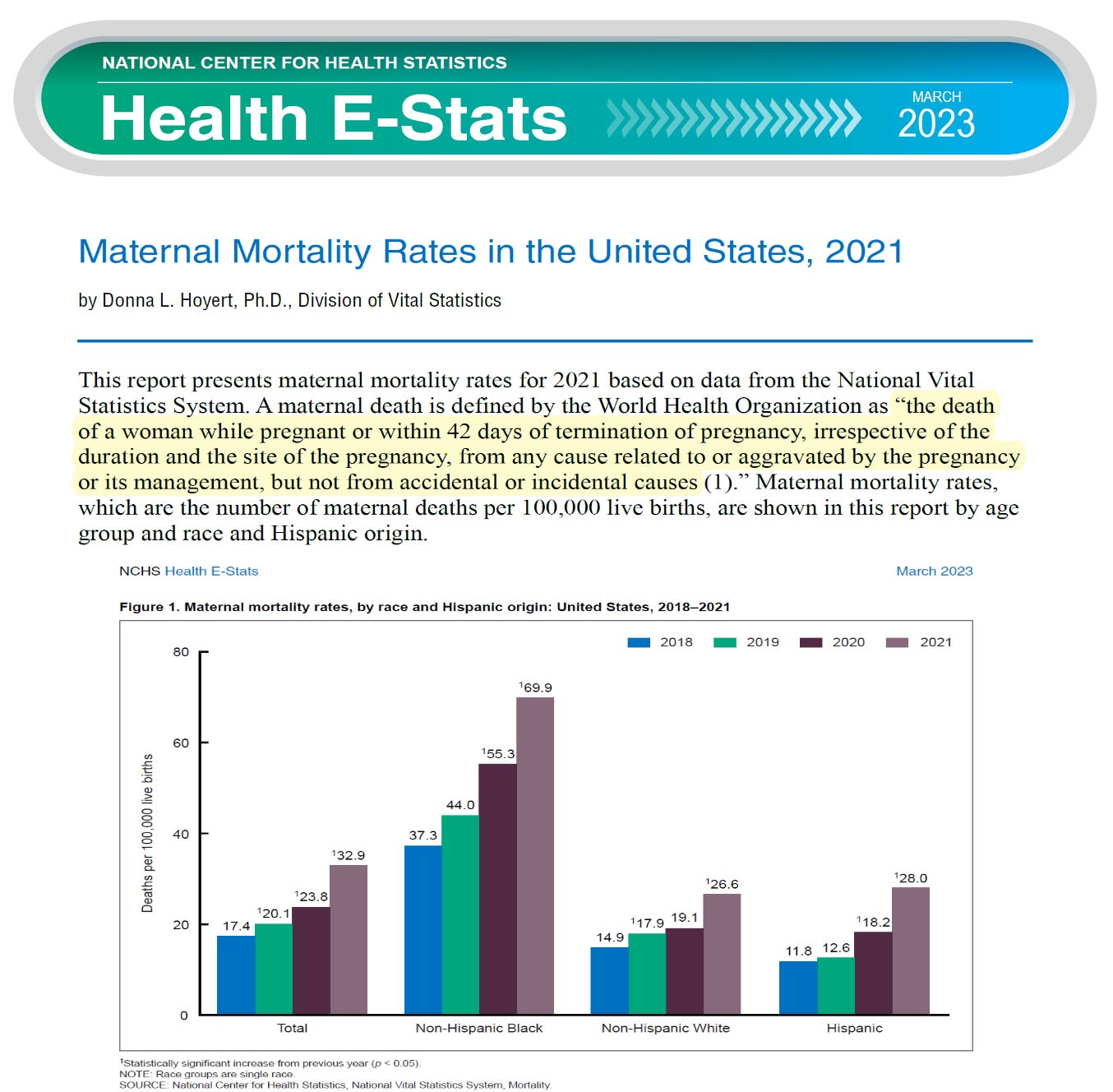
 The Worldwide Corona Crisis, Global Coup d’Etat Against Humanity
The Worldwide Corona Crisis, Global Coup d’Etat Against Humanity